- Le chantier TRICAT
- Notre histoire
- Programme Tricat 2024
- Communauté TRICAT
- L'entretien de votre Tricat
- Nos occasions
- Aide à la prise en main
- Témoignages clients
- Presse française
- Presse Internationale
- Réseaux sociaux

Tricat : la référence du trimaran transportable
Le chantier Breton Tricat résulte de ses 20 années d'expérience dans la conception, la fabrication, et la vente de Trimarans transportables et repliables.
Choisir Tricat, c’est choisir un niveau d’exigence élevé tant en termes de performances qu’en robustesse ou finitions. Ce sont des bateaux marins, simples, sensibles et très sécurisant, tant en solitaire qu’en famille ou entre amis.
Etre propriétaire d’un TRICAT, c’est adhérer à notre philosophie, et à cette relation privilégiée que nous tissons avec nos clients dans la durée.
En savoir plus
La gamme de trimarans TRICAT
Ils témoignent de la qualité des trimarans tricat.
Les clients comme la presse sont unanimes, la conception TRICAT est synonyme de qualité et de fiabilité. Retrouvez notre sélection de témoignages clients et d'articles de presse témoignant du savoir-faire de notre chantier.
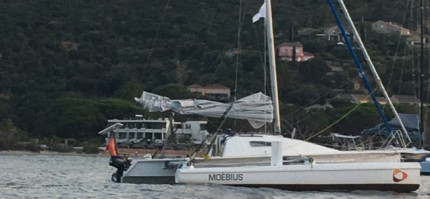
En Tricat 25 de l’Italie à la Corse du nord par l’archipel Toscan…
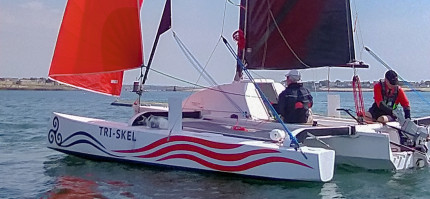
Témoignage de Jean-Paul, propriétaire du Tricat 20 performance TRI-SKEL
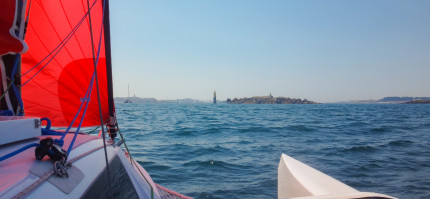
Tour de Bretagne en TRICAT 6.90 - Août 2022.
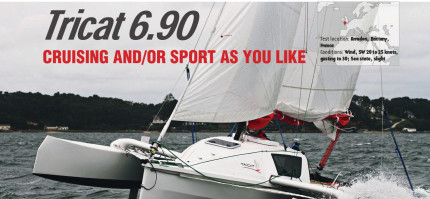
Tricat 6.90 Multihulls World
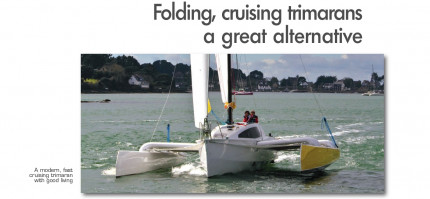
Tricat 30 Multihulls World

Yacht Tricat 20 (DE)

Yacht Tricat 30 (DE)
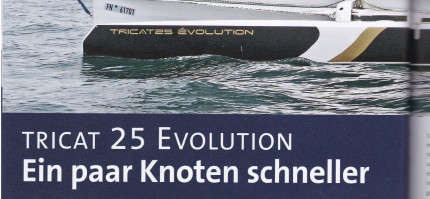
IDN Test Tricat 25 Evolution 2017 (DE)
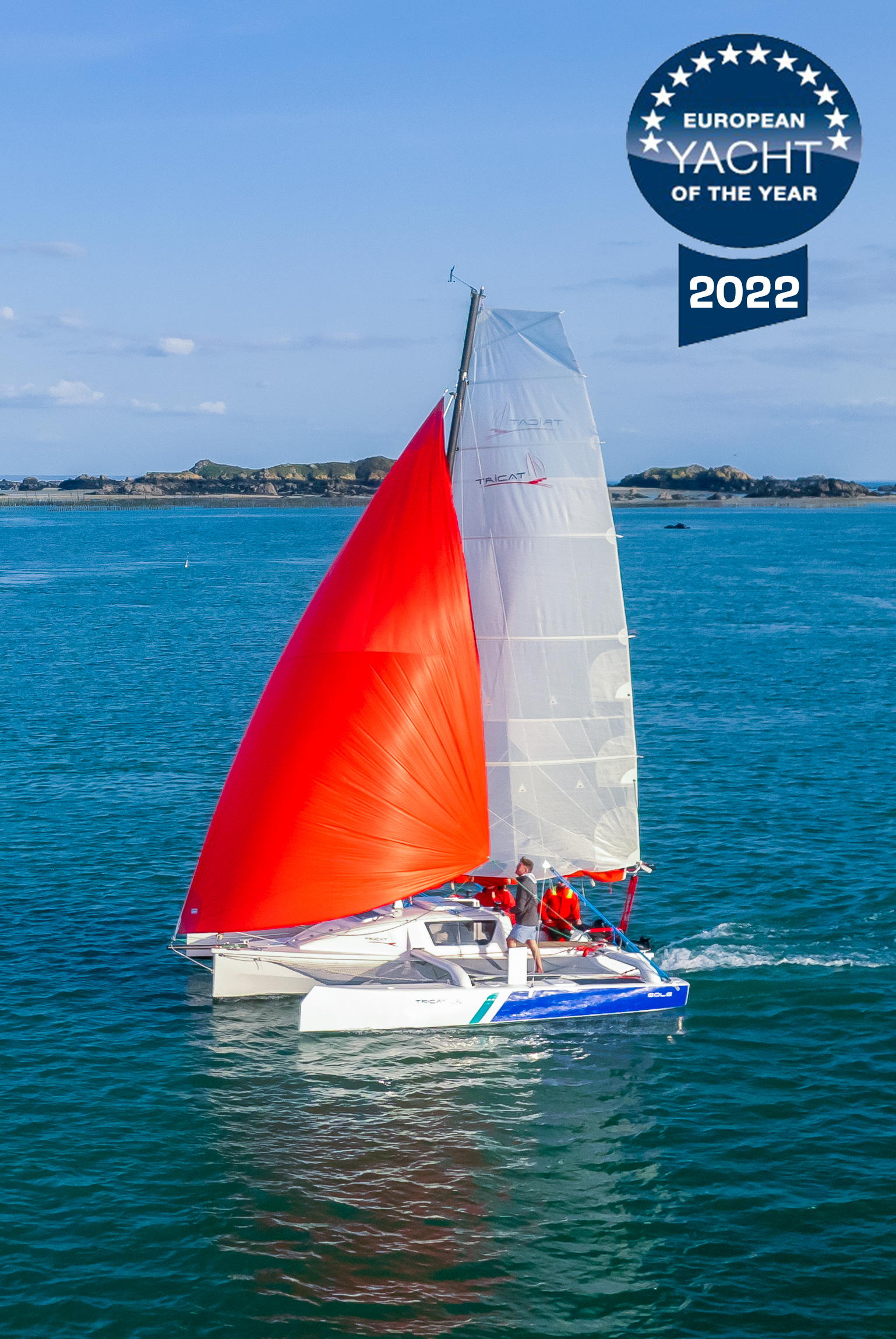
Imaginons ensemble le trimaran de vos rêves...
Une de nos grandes qualités chez TRICAT et nous en sommes fiers, c’est la relation privilégiée que nous tissons avec nos propriétaires, que ce soit avant ou après l’achat du trimaran.
Cette relation passe en partie par la discussion du choix du modèle et des options. Nous sommes heureux de proposer des versions de base de qualité pour tous nos modèles (infusion de série, appendices carbone, accastillage Harken), mais également des options ou des packs d’options comportant tous les éléments correspondant à différents programmes (croisière, sport, etc…) pour répondre à tous vos besoins et envies.
Nous mettons tout en œuvre pour fabriquer ensemble le trimaran de vos rêves. C’est pourquoi nous proposons une personnalisation complète et répondons à toutes vos demandes pour étudier et concevoir des options même hors catalogue si elles sont réalisables.
c'est aussi une gamme de services complète
Les dernières actualités TRICAT
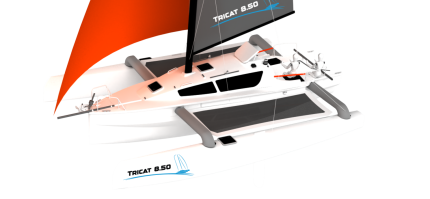
NOUVEAUTE 2025 - Le chantier Tricat dévoile son nouveau modèle : le Tricat 8.50
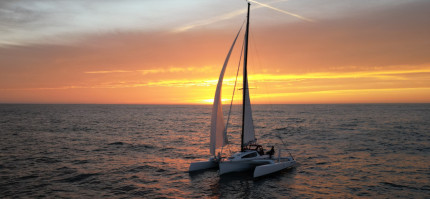
GRAND PAVOIS 2024
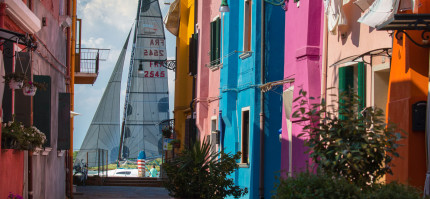
Meilleurs voeux 2024
Venez voir le chantier ou essayer un Tricat sur RDV au chantier naval à Plescop, Morbihan (56).
Ou contactez-nous pour voir un Tricat chez l'un de nos ambassadeurs.
Pour toute demande de rendez-vous. Contactez-nous pour réserver un créneau.
Free Shipping in the US on Orders $75+

Item added to your cart
The complete list of trimarans.
There is no single trimaran that is best for everyone. Where some prefer luxury cruisers for long trips with family and friends, others might opt for a high performance racing tri for thrilling rides at breakneck speeds. With the recent spike in trimaran popularity, these days there is a perfect tri for every sailor. So to help prospective trimaran owners decide which boat is just right for them, we here at WindRider have put together a comprehensive list of the best trimarans on the market today! Read through for simple at-a-glance trimaran comparisons of boats both big and small, exhilarating and relaxing, and for all price points.
Jump to a specific sailing trimaran: Neel Weta Corsair WindRider Dragonfly Catri Astus Hobie Sea Pearl Farrier Sea Cart Multi 23 Triak SeaRail Warren Lightcraft Diam Radikal Challenger

Known for their award-winning luxury trimarans, NEEL is based in La Rochelle, the capital city of sailing in France. NEEL trimarans are built for fast cruising with an average cruising speed of about 10 knots, and are even configured to facilitate that sustained speed under motor propulsion. The NEEL 45 was notably named Cruising World’s Most Innovative Vessel in 2013, and by all accounts is an easy-to-sail, high performance boat that is just plain fun.
At a glance:
Models: NEEL 45, 65
Length: 45’ – 65’
Cost: $$$$$
Use: Luxury cruiser

A fan favorite, Weta trimarans are fast, stable, and remarkably easy to rig. This single-sailor tri has a capacity of up to three, and the ease with which it can be transported and stored makes this a great, versatile boat for beginners. The Weta was named Sailing World’s 2010 Boat of the Year, and one ride is enough to know why: simply put, the Weta is an absolute ton of fun to sail regardless of skill level.
Models: Weta
Length: 14’5”
Cost: $$ $$$

The high-end Corsair trimaran definitely holds its own in the categories of versatility, performance, and convenience. Boasting a rigging time of 30 minutes from trailer to sailor , the Corsair 42 – whose convenient folding amas makes trailering possible – is a simple option even for single sailors, though cabin space is suitable for two adults. These boats are wicked fast, capable of reaching speeds of 20+ knots, and were made for skilled sailors seeking solid construction and high performance vessels, not for beginners.
Models: Pulse 600, Sprint 750 MKII, Dash 750 MKII, Corsair 28, Cruze 970, Corsair 37, Corsair 42
Length: 19’8” – 37’
Cost: $$$$ $
Use: Sports cruisers

Built for the sailor who wants to maximize the joys of sailing while minimizing any hassle, WindRider trimarans are notoriously fast, very safe, and a blast to sail from start to finish. With several models that can hold between 1 and 6 riders, including adaptive designs to allow participation from sailors of all levels of mobility, there’s something to suit every sailor’s needs. The WindRider 17, an exhilarating ride perfect for families or camper sailors, has been known to reach speeds of up to 20mph. This easy day sailor goes from trailer to sailing in under 30 minutes and is sure to fit in perfectly with whatever adventures you have planned.
Models: WR 16, 17, Tango, Rave V
Length: 10’11” – 18’3”
Cost: $ $$$$
Use: Day sailor

The Danish-built Dragonfly trimarans come in a variety of models ranging from 25’ – 35’, all known for their spry performance, comfortable ride, and ease of use. Every model comes equipped with the unique “SwingWing” feature, a motorized system that can unfold the amas even while the boat is already underway – making it accessible to marinas and slips, and even makes trailering possible. Perfect for those who don’t want to sacrifice their comfort for high performance, the Dragonfly can breeze along at 13 knots while remaining one of the quietest compact cruisers out there.
Models: Dragonfly 25, 28, 32, 35, 1200
Length: 25’ – 39’

Designed for both safe cruising as well as for high speed racing, Catri trimarans will make your day. Especially noteworthy is the Catri 25, a stable yet wildly fast foiling trimaran with accommodations for up to 6 people. With profiles optimized for speeds of 25+ knots when foiling, this is no beginner’s sailboat. The special attention paid to stability in the foil design allows the Catri to be a single sailor vessel, even at foiling speed, with no special physical abilities. Whether you’re taking a small crew for longer rides at shuddering speeds or bringing the whole family along for a shorter, but still thrilling sail, the Catri is truly one of a kind.
Models: Catri 25
Length: 25’
Use: Cruiser/racer

A popular brand of trimaran in Europe, Astus has recently made its way to the US market to the delight of sailors on this side of the pond. Designed to offer maximum pleasure with minimum hassle, all models of Astus trimarans are fast to set up, quick on the water, inherently stable, and always a joy to sail. Their outriggers are mounted on telescopic tubes for easy stowage and towing, and can even be extended and retracted on the water for access to narrow passageways and monohull slips in marinas. With models in all sizes and price points, Astus trimarans are a great option for any sailor.
Models: Astus 16.5, 18.2, 20.2, 22, 24
Cabin: Some models
Length: 16’ – 24’
Use: Sport cruisers
HOBIE ADVENTURE ISLAND

Great for beginners and adventurers alike, the Hobie Mirage Adventure Island series is nothing if not just plain fun. With the option to use as a kayak or as a very basic trimaran, the Hobie is transportable, versatile, unintimidating, lightweight, and wonderfully affordable. The pedal system known as “Mirage Drive” allows a person to pedal the kayak using their legs for an extra kick of movement in slow winds. Amas tuck close to the main hull for docking or car-topping, adding serious ease and convenience to the exhilarating experience of the Hobie.
Models: Hobie Mirage Adventure Island, Mirage Tandem Island
Length: 16’7” – 18’6”
Use: Convertible kayak/trimarans

Best known for its use in camp cruising excursions, the Sea Pearl offers a roomy main hull and particular ability to sail in very shallow waters, making beaching and launching a breeze. The lightweight Sea Pearl trimaran is easy to tow, and the larger-than-expected cabin opens this vessel up for overnight adventures with plenty of storage space. The simple design makes the Sea Pearl notoriously low maintenance, and the ease it takes to rig and sail it add to the overall delight of owning this boat.
Models: Sea Pearl
Length: 21’
Use: Camper cruiser

Quick, lightweight, roomy, and trailerable, Farrier trimarans are made for versatility to fit every sailor’s needs. Different Farrier models are available in plan or kit boat form for those who appreciate building their boat themselves, but of course, also as the full production sail-away boat for the rest of us. Single-handed rigging and launching takes under 10 minutes from start to finish, minimizing hassle and getting you on the water fast. All non-racing Farrier designs use a minimum wind capsize speed of 30 knots or more to ensure safety for all those aboard. Add the roomy cabin and high speed capabilities to the equation and you’ve got a boat that is great fun for everyone.
Models: F-22, 24, 25, 82, 27, 28, 31, 9A, 9AX, 9R, 32, 33, 33R, 33ST, 36, 39, 41, 44R
Length: 23’ – 39’4”
Cost: $$$ $$
Use: Sport cruisers/racers

One of the biggest names in the game, SeaCart is internationally noted for its high performance trimarans that far exceed expectations for a production boat of its size. The SeaCart trimaran performs as brilliantly off the water as it does on with its super-light and efficient harbor folding system, making light work of trailering. Notoriously easy to manage and maintain, the SeaCart 26 One Design is the ultimate day racing trimaran, designed for both course and inshore/coastal distance racing. Absolutely worth the international buzz it has garnered, the SeaCart is a thrill from beginning to end.
Models: SeaCart 26
Length: 26’

A high performance racer class, the Multi 23 is a lightweight, powerful trimaran known for its wicked speed of up to 25 knots. Multi trimarans of both available configurations were designed to give beach cat thrills and speed without any of the stability or seaworthy concerns. Open ocean sailing is no issue for the Multi’s big bows, which do their job to keep her stable. Built for sailors with a need for speed, the Multi makes a perfect weekend boat for racers, especially those with a taste for boat camping.
Models: Multi 23
Length: 23’

Another dual outrigger sailing kayak/canoe design, the Triak trimaran was designed to be effortless and fun, especially for beginners. Paddle the kayak with sails furled, use the foot pedals for an extra kick of momentum, or sail with just the mainsail – the only boat in its class to feature an asymmetrical spinnaker – for exhilarating speeds and a blast on the water. Car-top the Triak anywhere for a quick sail or plan for a week long expedition, but always count on having a great time on this easy little boat.
Models: Triak
Length: 18’
Use: Convertible kayak/trimaran

SeaRail trimarans are known for being affordable, light weight, trailerable trimarans that offer the perfect combination of exciting and relaxing experiences to a wide range of sailors. Whether it’s day sailing with your family, resort or camper sailing, SeaRail trimarans are ideal leisure vessels. Leave the hassle to the other boats – the SeaRail takes you from trailer to sailor in 15 minutes. But don’t let its reputation as a leisure tri fool you: if speed is what you want, rest assured that the SeaRail can deliver that as well.
Models: SeaRail 19
WARREN LIGHTCRAFT

Warren Lightcraft trimarans , another example of a convertible kayak-to-sailboat option, are known for their aesthetically pleasing designs that are also, as the name implies, very light for simple transportation and ease of use. Convert the kayak into a fast, high performance sailboat in just minutes, fly around on the waves all day long, then simply car-top the 68lb Warren for a maximum enjoyment, low-hassle day on the water. Perfect for sailors and paddlers of all skill levels, the Warren Lightcraft is the best of both worlds and an absolute joy to sail.
Models: Warren Lightcraft
Length: 15’6”

Built strictly with racing in mind, the Diam 24 is a light, powerful one-design class trimaran and a notoriously exceptional performer. Boasting blistering speeds of up to 30 knots, Diam trimarans are not intended for beginners. For racers who crave the very best in terms of intense speeds, smooth handling and impeccable performance, the Diam is the red-hot one-design racing tri for you.
Models: Diam 24
Length: 24’

For the sailor who prefers the finer things in life, the Radikal 26 delivers. Perfect for bringing the whole family out for a day on the water, this high performance, trailerable sailing trimaran strikes the most luxurious balance between quicksilver speeds and a smooth, comfortable ride. The Radikal 26 trimaran is as convenient to transport and set up as it is pleasant to sail, with a folding system that minimizes rigging hassle and also makes this a trailerable tri. Built for a fast and comfortable sail rather than a hold-onto-your-seats thrill, one-the-water safety and overall pleasure makes the Radikal 26 what it is.
Models: Radikal 26
Use: Sport cruiser

A solidly-built, single-handed trimaran, the Challenger also doubles as an adaptive design – meaning it is made to accommodate sailors of all levels of physical mobility. Best suited to lakes, the Challenger is a very safe, seaworthy boat for sailors of all ages and experience levels. Add to this the ease of owning, transporting and maintaining the Challenger trimaran and what you get is a simple, fun sailboat perfect both for beginners and those seeking a cheap thrill alike.
Models: Challenger
At a glance comparison:
| Astus 16.5, 18.2, 20.2, 22, 24 | 16’ – 24’ | Sport cruiser | Some models | ||
| Catri 25 | 25’ | Cruiser/racer | Y | ||
| Challenger | - | Day sailor | N | ||
| Pulse 600, Sprint 750 MKII, Dash 750 MKII, Cruze 970, Corsair 28, 37, 42 | 19’8” – 37’ | Sport cruisers | Y | ||
| Diam 24 | 24’ | Racer | N | ||
| Dragonfly 25, 28, 32, 35, 1200 | 25’ – 39’ | Luxury cruiser | Y | ||
| F-22, 24, 25, 82, 27, 28, 31, 9A, 9AX, 9R, 32, 33, 33R, 33ST, 36, 39, 41, 44R | 23’ – 39’ 4” | Sport cruisers/racers | Y | ||
| Mirage Island, Mirage Tandem Island | 16’7” – 18’6” | Convertible kayak/trimarans | N | ||
| Multi 23 | 22’ | Racer | Y | ||
| NEEL 45, 65 | 44’ – 65’ | Luxury cruiser | Y | ||
| Radikal 26 | 26’ | Sport cruiser | Y | ||
| Sea Pearl | 21’ | Camper cruiser | Y | ||
| SeaCart 26 | 26’ | Racer | Y | ||
| SeaRail 19 | 18’ | Day sailor | N | ||
| Triak | 18’ | Convertible kayak/trimaran | N | ||
| Warren Lightcraft | 15’6” | Convertible kayak/trimaran | N | ||
| Weta | 14’5” | Racer | N | ||
| WR 16, 17, Tango, Rave V | 10’11” – 18’3” | Day sailor | N |
Did we miss one? Let us know. Tell us what you sail and what you like about each boat in the comments below.
- Choosing a selection results in a full page refresh.
- Opens in a new window.

Transportable trimaran expert
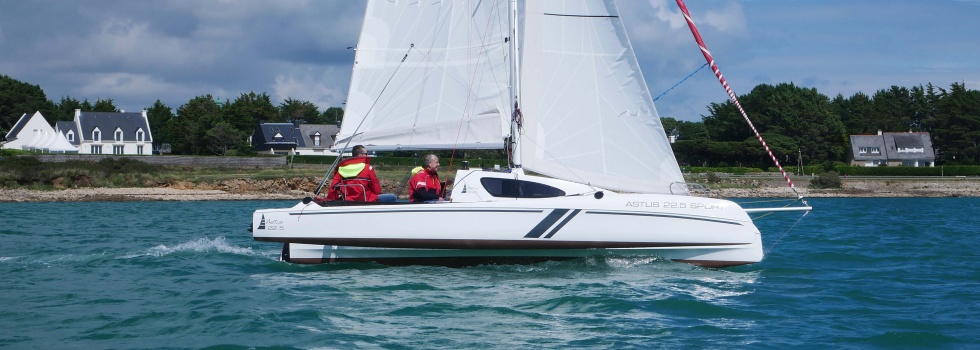
THE COASTAL CRUISER
After major successes of the Astus 16.5 and the Astus 20.5, we continue to expand our range, signed by VPLP Design with the launch at the end of the year 2020, a new model, the Astus 22.5, which will replace the Astus 22.1
True to the successful concept of Astus trimarans, the Astus 22.5 is transportable like others Astus. Modern and fast, with a length of 6.90 m, a width of 4.90 m and 4 beds possibility, it will be ideal for family outings.
It retains all the features which made the success of our trimarans :
- Easy to rig and handle
- Transportable on the specially adapted trailer
- Retractable floats offer limitless travel opportunities.
- Economical, maintenance is minimal and garage storage a real possibility
- Nomadic, movement between stretches of water has never been simpler
- Personalizable, with multiple options to suit every sailing style
- Stable, with 1150 litre floats
- Streamlined hull which enables the boat to glide through water and increases speed
- Tulipped hull for effective spray deflection.
- High-performance with modern, sporty lines
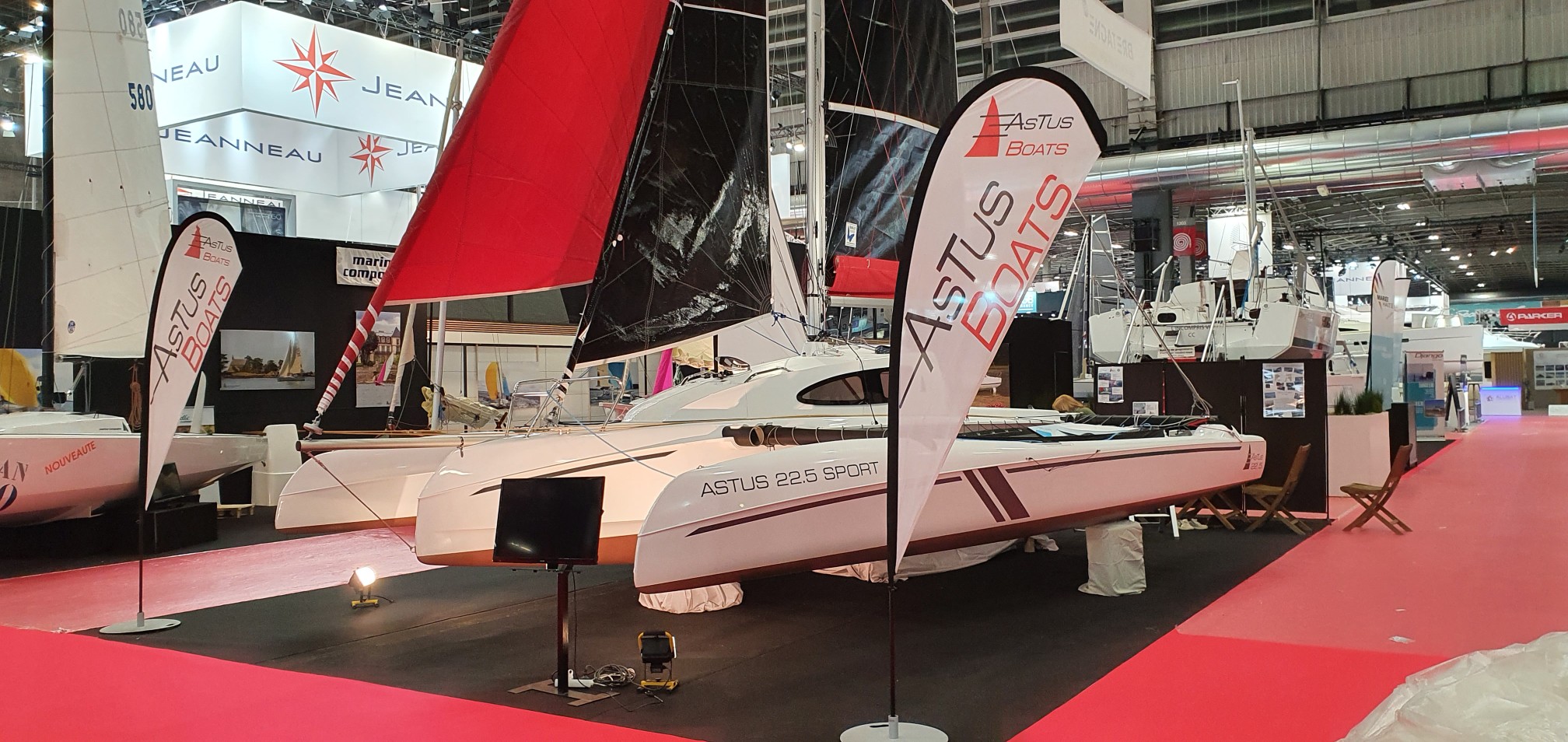
Two versions of the Astus 20.5 are available, each adapted to your style of navigation :
- A leisure model for gentle,family sailing
- A sports version to satisfy regatters (vaccum system central hull)
Nominations and awards
The Astus 22.5 is nominated for the election of the European Yacht of the Year2023
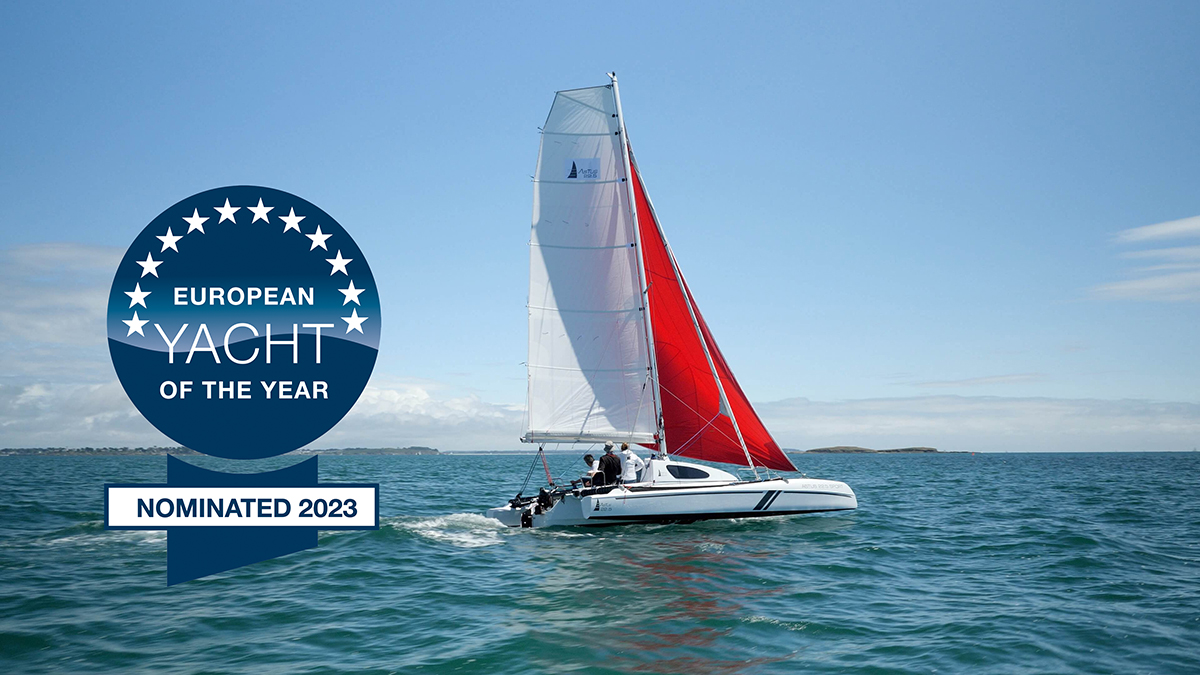
How to sail a trimaran
Improvement : new rudder bar
Folding and unfolding floats
Test by Voile magazine
Test by Multicoques Mag
Astus 22.5 on water

Options available on the Astus 22.5

Astus 22.5 inside

Technical characteristics
- Length of central hull: 6.95 m
- Overall length 8.30 m
- Width unfolded: 4.90 m
- Width folded: 2.49 m
- Length of the mast: 9 m
- Draught: 1.40 m-0.34 m
- Weight: 650 kg
- Height under beam: 1.65 m
- Hull by vaccum infusion.
- Main sail: 21 sqm
- Gennaker: 26 sqm
- Spi: 43 sqm
Voiles et voiliers N°608 du 18/09/2021 Video trial vidéo
VIDÉO. Essai. Astus 22.5, un petit trimaran repliable et rapide signé VPLP (ouest-france.fr)
Voiles magazine N°Octobre 2021 Essai
Essai by Voile Magazine (French)
Multicoques magazine Essai en Français (French) Essai par Multicoques magazine : Astus 22.5 - Pour l'amour de la glisse. Essai en Anglais- Test in English Test by Multihulls world - Astus 22.5 - If you love sliding across the water...
Yacht magazine Essai en Allemand - Mars 2022 Astus 22.5
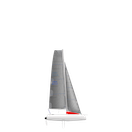
Folding System
Legendary ability, unbeatable reliability.
Folding and unfolding a Corsair trimaran takes only a minute. With just 4 bolts to remove, it is easily managed by one person, and is normally done while afloat. Simply raise (to fold) or press down (to unfold) the inboard end of one cross beam. It can be done from the safety of the cockpit and only a little force is needed due to the folding system’s carefully balanced geometry, and the movement of the floats being mostly horizontal.
The solid aluminium folding struts have absolute control over the folding motion and prevent flexing or racking. A stainless steel bolt on the inboard end of each beam secures the floats for sailing. Crucially, wingnets remain attached during the folding process – their frictionless fixing allows them to tension themselves appropriately through the folding process. The system is so simple and balanced that Corsair trimarans can even be folded while motoring.
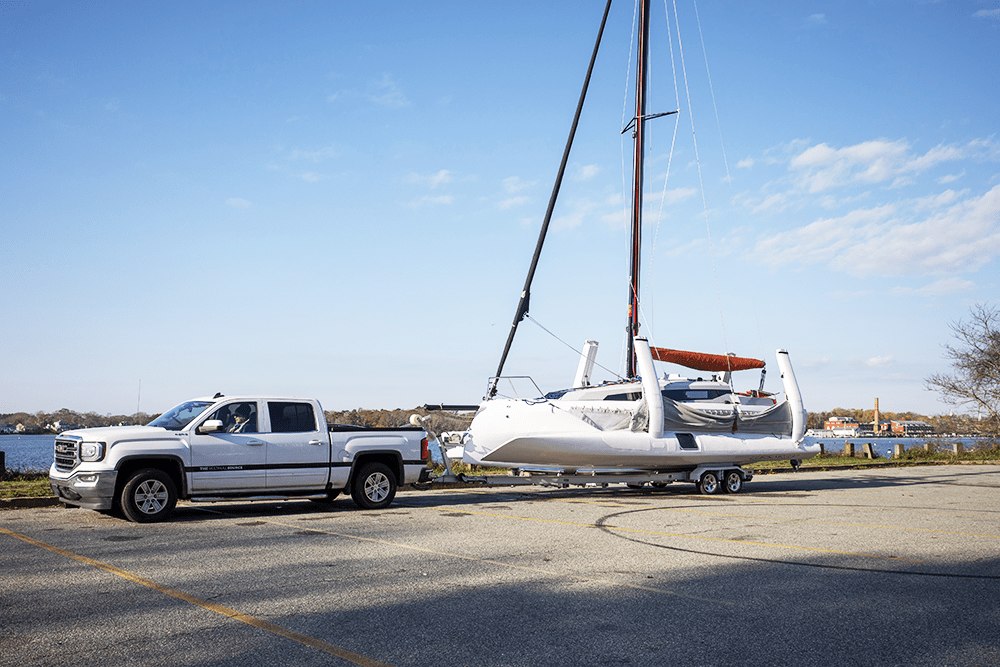
TRAILERING ACROSS CONTINENTS
Corsair Marine trimarans are especially weight-conscious, and sit low on their trailers meaning they have excellent trailering characteristics. They are equally easy to launch, giving you more time on the water, and the ability to expore many more remote cruising grounds or participate in regattas far from home. Some Corsair trimaran models go from trailer to water in 25 minutes, and with practice even the largest boat models can be done in 40 minutes.

Corsair 880 Trimaran | 2022 Boat Review by Multihulls World
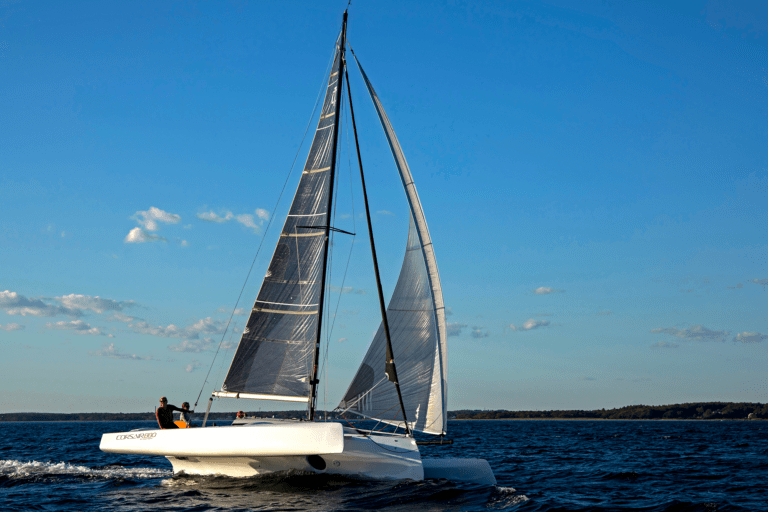
Corsair 880 – Drive Out, Fold Out, Thrill Out, Chill Out
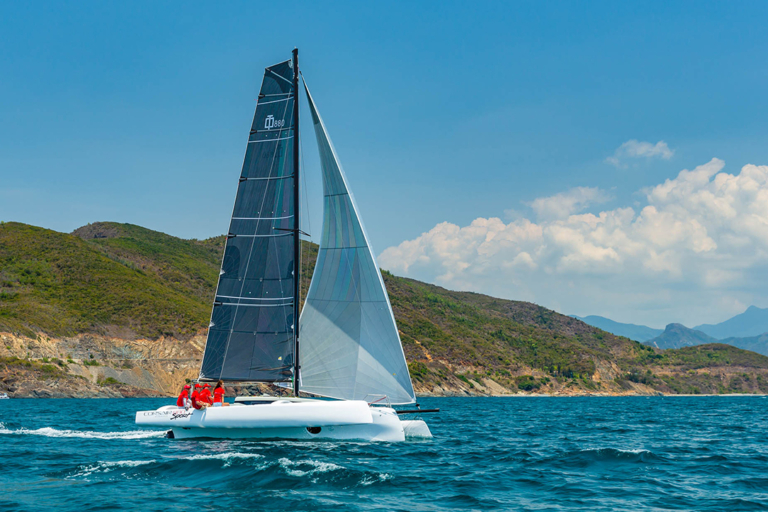
Australian Debut of the Corsair 880 at the Sydney International Boat Show
- Folding Corsair Trimarans: Legendary Ability, Unbeatable Reliability
- 5 Reasons Why The Corsair 760 Trimaran Won Multihull Of The Year
- Corsair Range Brochure
- Corsair Community
- Find A Dealer

Tel +84 28 3873 3630
Sales Enquiry:
Customer Service Enquiry:
© 2024 Corsair Marine International. Alls rights reserved.
Privacy Policy
- Dragonfly Service
- Dragonfly 1200
- Dragonfly 920
- Factory Tour
- Backstage Videos
- Dragonfly Sail Guide
- Try before buy
- Dragonfly-Training & More
- Newsletter Archive
- Clubs & Associations
- Customer stories
- Merchandise
- Privacy Policy
- General Terms of Sale
Dragonfly 40
The all-new Dragonfly 40 is a cutting edge design with focus on easy handling and shorthanded sailing. Spacious cockpit and a stylish, modern interior. Setting new standards for comfortable and safe family offshore sailing. World Premiere boot 2020 Düsseldorf.
Dragonfly 25
The all-NEW Dragonfly 25 is a high-performance trailer-sailer, easy handling for camping and racing sailors looking for an exhilarating lightweight trimaran which retains comfortable accommodation for weekend cruising with family and friends
Dragonfly 28
The Dragonfly 28 sets new standards for the possibilities of a sailing boat. The perfect boat does not exist - but the Dragonfly 28 is very close to this ideal. New facelift design for all Dragonfly 28 models. The Dragonfly 28 comes in both a Touring and Sport version, and, introducing 2016 the new Dragonfly 28 Performance version
Dragonfly 32 Evolution
Discover the evolution of a popular model. Introducing high volume wave piercing floats for fast and relaxed sailing. Quality combined with performance secures an outstanding experience.
45 years of Trimarans
Quorning Boats offers an excellent range of our prize winning Dragonfly trimarans.
From ultimate freedom in versatility and performance to ocean crossing cruising, safety and comfort, it's your freedom of choice...
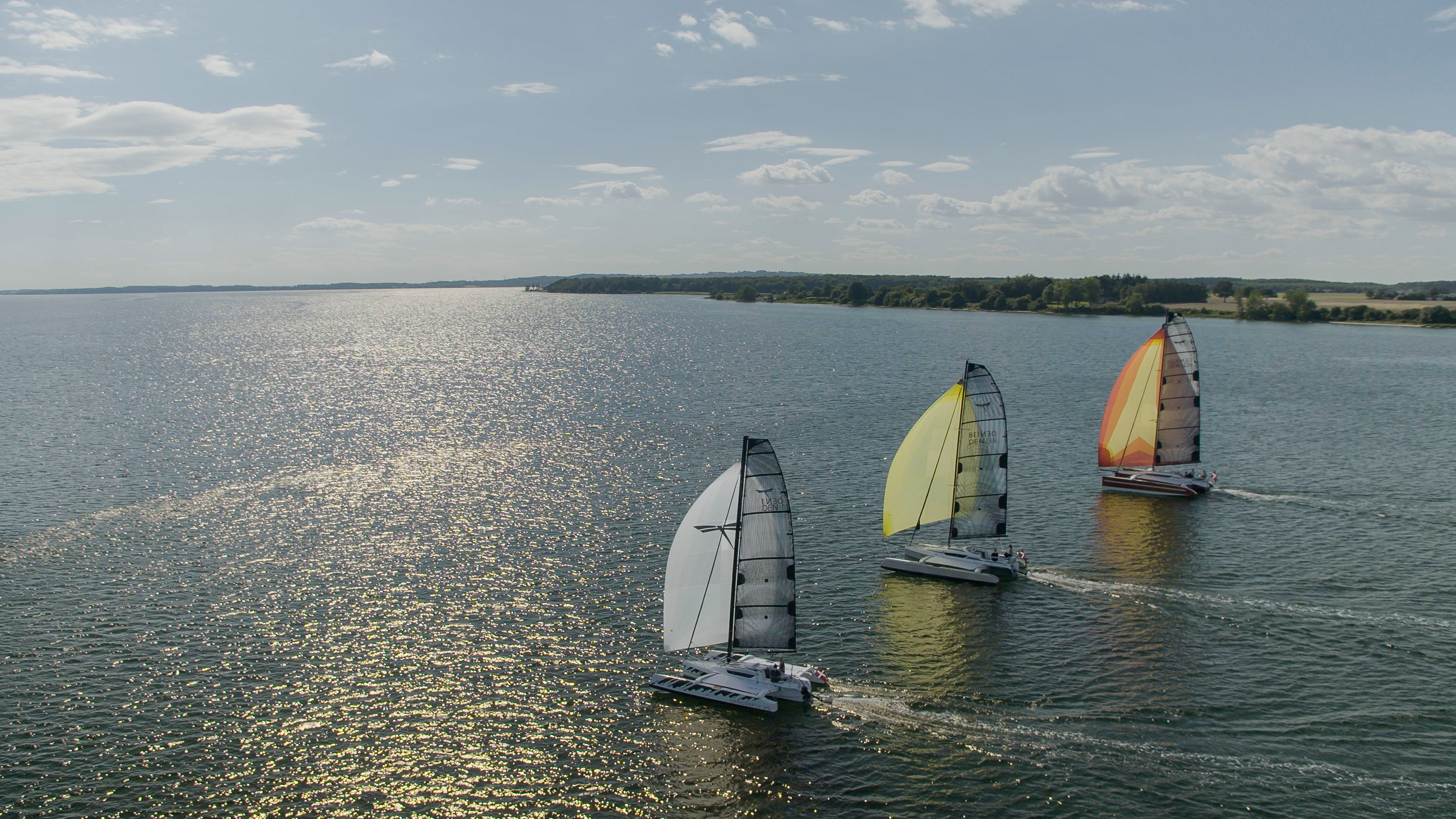
Southampton Boat Show
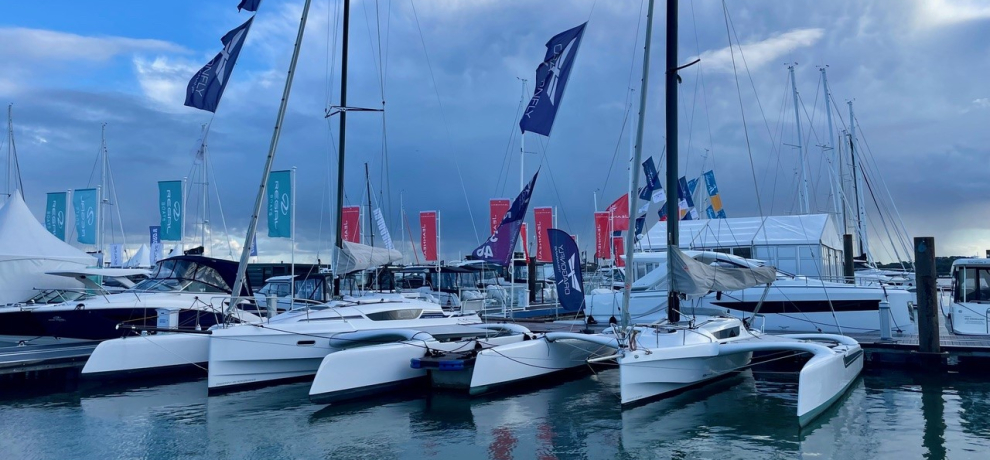
From 13-22 September 2024, our dealers from Multihull...
Newport Boat Show
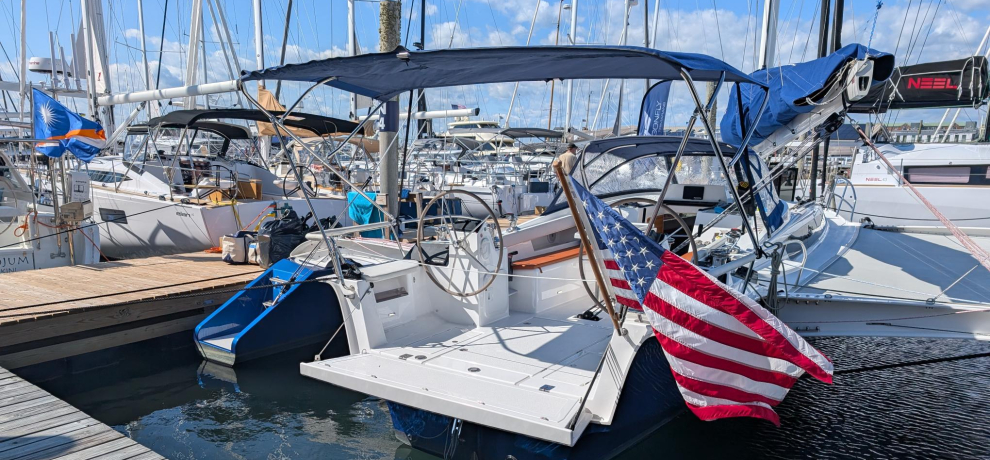
From 12-15 September 2024, our dealers from Windcraft...
Cannes Yachting Festival
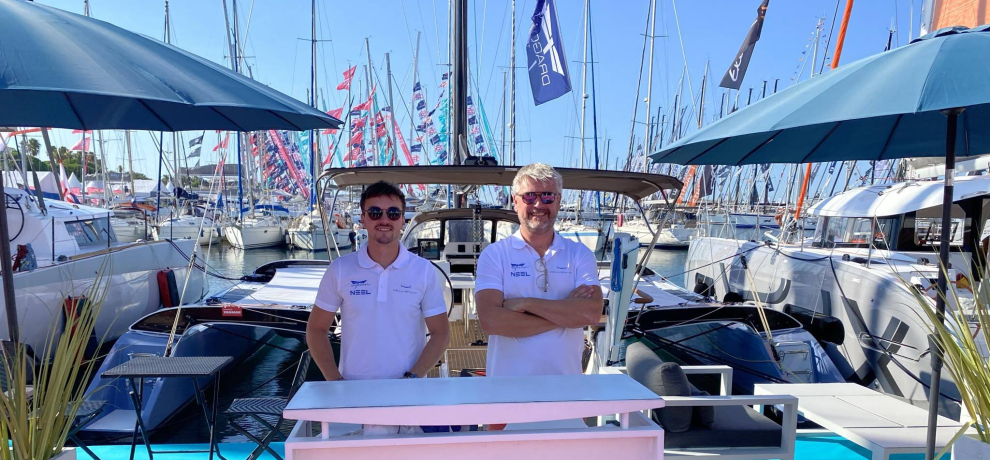
From 10-15 September 2024, our dealers from...
NEW Dragonfly 36
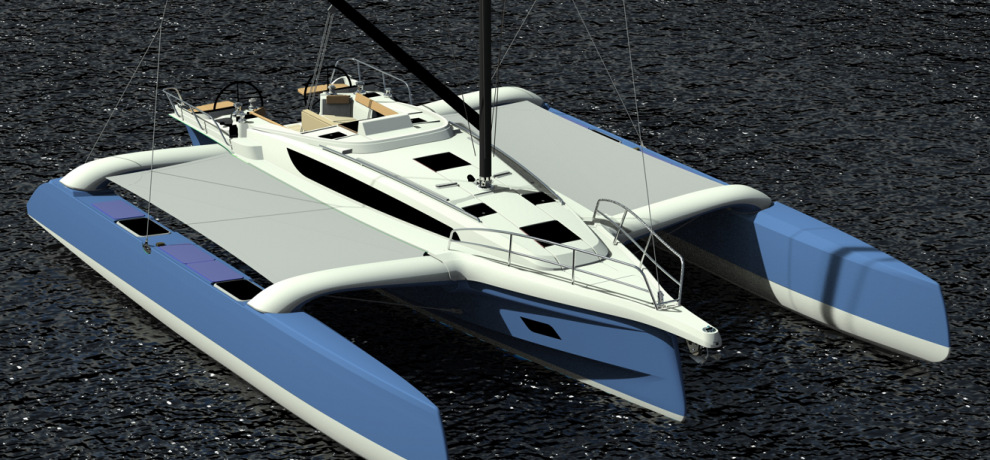
After 2.5 years development, we are proud to introduce our...
Dragonfly Days 2024
Join us as we wrap up an unforgettable three days of sailing,...
Dragonfly Days 2024 - Day 3

The 3rd and last day of the owner's event Dragonfly Days 2024...
Dragonfly newsletter

Find a dealer
Find your local dealer
Quorning Boats ApS
Skærbækvej 101 7000 Fredericia Denmark
+45 7556 2626
VAT No DK 18 88 83 78
Dragonfly 32
Dragonfly 36
- Previous models
Quick links

Yachting Monthly
- Digital edition

Astus 22.5 review: sporty little trimaran for the weekend?
- David Harding
- February 3, 2023
Adventurous sailors tend to be drawn to small multihulls but the new Astus 22.5 would suit the weekend and family user too
Product Overview
Price as reviewed:.
Small multihulls like the Astus 22.5 can be remarkable boats in which you can do remarkable things. Like Richard and Lilian Woods: each sailing one of their own Woods-designed Strider 24 catamarans single-handed from Plymouth to Russia in a series of day-hops in 1989 – not long after glasnost and perestroika. Joined by Stuart Fisher in a third Strider, they regularly sailed up to 80 miles in a day and once covered the 70 miles between ports in seven hours.
Or Rory McDougall, who built a Wharram Tiki 21 and sailed it around the world singlehanded . A few years later, he finished a close second in the Jester Challenge before clocking up to 185 miles a day on the return Atlantic crossing .
Then there’s the Norwegian team that circumnavigated the globe in the Arctic Circle, taking in the north-east and north-west passages in one season. They chose a Corsair 31 because it had the necessary speed and could also be hauled up on to the ice if it threatened to crush them.
That’s going up the size range a little, but smaller and closer to home is another trimaran from the same stable, the Corsair Dash 750, that completed every race in a major UK regatta faster than a state-of-the-art 42ft racing monohull sailed by a professional crew. Then, while the 42-footer was still bashing her way back around the coast to her home port after the event, the Dash had been trailed home and parked in the owner’s drive.
Whether it has two hulls or three, whether it’s racing or cruising and whether it’s sailed locally or across oceans, there’s no doubt that small multihulls allow you to do remarkable things. It helps if you’re a remarkable person, of course. I have met and sailed with many of the people in these examples and none of them is your average weekend sailor – not that many weekend sailors aren’t also remarkable people, either as sailors or in different ways. They have simply chosen not to do what sensible people might regard as crazy things with their boats.

Steady as she goes: under gennaker we frequently exceeded 13 knots Photo: David Harding
So is it crazy to drive over to France, collect a 23ft trimaran fresh from the factory and spend two weeks cruising around the Golfe du Morbihan and southern Brittany before trailing it home? Hein Kuiper didn’t think so, and I agree. After all, Hein is the UK’s dealer for Astus Boats, and it was a brand new Astus 22.5 that he was collecting last summer to bring home as his demonstrator.
Time on the water
Some dealers spend little time sailing the boats they sell, but Hein takes a different view. If you do yourself what prospective buyers are likely to do with them, you’re in a much better position both to sell to them and to help them once they’ve bought.
So it was that Hein and his wife, Hilary, spent two weeks living aboard a sporty, slim-hulled trimaran in Brittany, sailing by day and spending the nights aboard too, usually on a mooring or at anchor. Given that trimaran of this nature will have less room below decks than a typical monohull of similar length, that takes some discipline and you need to accept that it’s camper-cruising.

Helming from the trampoline gives a good view forward, with space for three or four people in the cockpit. Photo: David Harding
The main hull of the Astus 22.5 is nearly 23ft (6.95m) long: unusually for a French boat, the designation understates the length. In sailing mode with the bowsprit rigged (so you can fly the gennaker), the total length is 8.3m. The sailing beam is 4.90m (16ft), but it takes only a few minutes, whether you’re ashore or afloat, to reduce the beam to 2.49m (8ft 2in) for trailing or to fit into a marina berth.
In many berths, such as the one in Mercury where I joined Hein for our test sail, you only need to slide in one float. There’s also a ‘marina position’ for the floats, giving a beam of 3m (9ft 10in) for greater stability than afforded by the trailing position.
On meeting the Astus 22.5 in the flesh I saw that, while looking as though she should still zip along nicely, she was distinctly chunkier than her little sister, the Astus 20.5 , that I tested in 2021. The knuckle low down in the main hull looks more pronounced, leading to relatively greater volume above the waterline, and the coachroof is significantly higher too.

Set on an endless furling system, the jib has an integral halyard and is zipped around the forestay to simplify rigging. Photo: David Harding
When you look down below, it’s clear that the difference in internal space is greater than would be accounted for simply by the greater length, significant though that would be in itself.
With the 20.5, fitting in anything more than overnighting accommodation would have entailed unacceptable compromises in performance, so that wasn’t attempted. Given an extra couple of feet or so, the designers (VPLP) had the opportunity to turn the Astus 22.5 into a genuine weekender – or even a two-weeker – so they pushed out the volume while still keeping the boat sporty.
Article continues below…

Astus 20.5: Fast, fun and affordable trailable trimaran
For fast yet undemanding sailing, easy trailing and simple camper-cruising, the Astus 20.5 trimaran is likely to find wide appeal…

Coast 250: The mighty micro cruiser
Producing a boat that planes under power and sails like a thoroughbred has been an elusive quest for decades. Has…
When I got to Mercury I was anxious to get out and sailing sooner rather than later. Dark clouds were gathering and threatening rain and, in any event, I wanted to sail before exploring below decks.
Light and fresher
As was consistently the case in 2022 – adding to the challenges of arranging boat tests – the weather forecast was wildly inaccurate yet again. Instead of sunshine and brisk winds (thunderstorms being promised for later), we were met in the Solent by drizzle and barely 6 knots of breeze. Hoping conditions would improve, we delayed the photo boat by an hour or two and did what we could in the breeze we had. The Astus 22.5 made respectable progress in the light conditions, clocking 4-4.5 knots upwind in the slight Solent popple.

Moving forward is easy along the wide trampolines, which also provide plenty of space for in-harbour tents or for carrying inflatables or paddleboards. Photo: David Harding
Eventually the south-easterly breeze began to build before settling down at 12-14 knots with occasional fresher spells. With the tide running east, the waves were soon big enough to notice. At least we had enough wind to power through them as long as we kept the nose down a few degrees. With a boat like this it’s all about finding the right balance between speed and pointing.
We could sail along happily enough at 6 knots, but leaning on the jib a little more would soon take us to well over 7 knots in the flatter patches of water. Our tacking angle when we sailed slightly freer was typically around 100° by the compass so, on the basis of an average boat speed of 7 knots, our VMG was around 4.5 knots.
Pitching was minimal most of the time and our motion reasonably smooth given the sea state; just the occasional thud when we hit a trough behind one of the steeper waves.
As it happened, the Quarter Ton Cup fleet was also in the eastern Solent. Keeping our distance, we had no opportunity to pace ourselves directly against them upwind but it was clear that, as you would expect, we were sailing a little lower and significantly faster. Had we been racing in the fleet I suspect we would have reached the windward mark first.

A pronounced knuckle above the waterline and a higher coachroof leads to a roomier forward berth than on the Astus 20.5. Photo: David Harding
As for downwind – well, of course you don’t sail a boat like the Astus 22.5 deep downwind. In such wonderful sailing conditions we didn’t even try, other than briefly for statistical purposes. We couldn’t resist the temptation to reach across the Solent at whatever angle gave us the best speed, heading up in the lulls to maintain the apparent wind and diving down as necessary in the gusts. In the lighter patches we dropped down to 9-10 knots; roughly what we had seen when two-sail reaching in a bit more breeze.
In the fresher spells we maintained closer to 12 knots for good periods and peaked at 14.8. All the time the boat felt perfectly comfortable. With 1,150 litres of buoyancy in each float, together with all that beam and a relatively modest sail plan – even given the square-top mainsail and tri-radial sails on our test boat – we never felt the need to de-power.
When you need to work your way downwind, as we did eventually, it’s perfectly possible without spoiling the fun too much. Just sail a few degrees lower all round, soak away as far as you can in the gusts, and you’ll soon get there. It’s like sailing any performance multihull or dinghy with an asymmetric. I don’t think the Quarter Tonners would have stood much chance.

One in, one out: with the starboard float in its ‘marina position’ and the port float extended for sailing, the Astus still fits easily into a normal berth. Photo: David Harding
Sitting comfortably
The cockpit will accommodate three people without a crush, or four if you’re not being too active. With the traveller running across the full width of the aft end, there’s plenty of open space – and that’s before you take into account the trampolines.
You can helm from the cockpit or, for a better view and more power in a breeze, extend the tiller extension and move on to the windward trampoline. Here you can lean against the backstay and brace your feet against the main hull. You stay pretty dry out here most of the time. Very little spray found its way aft. It’s the leeward trampoline that gets wet, especially if you’re pushing on.
Like most performance trimarans, the Astus 22.5 sails at a few degrees of heel so the windward hull is always clear of the water and the heel naturally increases as the wind builds.

The centreboard’s case is offset to port to minimise intrusion into the cabin. It also provides a handy step. Two decent-sized quarter berths extend aft with stowage between and below them. Photo: David Harding
If we got a gust when already at full power under gennaker, the rudder blade occasionally lost bite. That was mildly disconcerting, though laminar flow could quickly be restored with a brief wiggle to leeward first. It was the same blade as used on the 20.5. More area was clearly needed and I would have liked more balance too, so I was pleased to hear that Hein had commissioned a deeper, more balanced blade as a trial and, later, that Astus had also decided to offer their own alternative. It will be supplied with the Sport rig in the UK.
On the whole, the balance of boat and rudder were both fine. We carried a bit of weather helm when powered up on a reach, which we might have been able to reduce by partially raising the centreboard. As on the 20.5, it’s a hinging board, with the up/down control lines in the cockpit and the case offset to port to open up space in the cabin.

There’s space beneath the forward berth for a chemical toilet. Photo: David Harding
In terms of rig and hardware, it’s all pretty straightforward. The standard rig is aluminium and you can upgrade to carbon. Fixed bullseyes on the coachroof for the jib are standard too, though I would pay a little extra for tracks. You don’t need to winch the main halyard – just sweating it is enough, then use the cunningham to tension the luff. Spinlock clutches and Harken winches handle the lines. You need lots of backstay and mainsheet tension to get the best from a boat like this upwind. Both have 8:1 purchases, which are fine as long as you’re not too cautious when using them.

Wider beam and more headroom than on the Astus 20.5 make the forward berth into a proper double. Photo: David Harding
Sleeping and stowing
Space to sit down and stretch out in the cabin can be tight on a slim-hulled trimaran. So too can space to stow your kit, inside or out. Stowage is surprisingly good: there’s an open-fronted locker each side aft in the cockpit and a generously sized locker beneath a hatch in the sole. Then you have hatches in the middle of each float, the modest apertures opening into spaces that will swallow more warps and fenders than you’re likely to carry. Built into the forward end of the coachroof is the anchor locker, with space for a couple of fenders too.
Below decks is a 2m (6ft 7in) double berth in the bow (with a small hatch overhead and space for a chemical loo underneath), mouldings each side for a basic galley, two quarter berths and plenty of sitting headroom (1.6m/5ft 3in in total).
There’s a lot more room than on the 20.5 and even a little timber trim, but thankfully still no hullside or deckhead linings to minimise weight and allow easy access to the fastenings for the deck hardware.
Enjoyed reading this?
A subscription to Yachting Monthly magazine costs around 40% less than the cover price .
Print and digital editions are available through Magazines Direct – where you can also find the latest deals .
YM is packed with information to help you get the most from your time on the water.
- Take your seamanship to the next level with tips, advice and skills from our experts
- Impartial in-depth reviews of the latest yachts and equipment
- Cruising guides to help you reach those dream destinations
Follow us on Facebook , Twitter and Instagram.
The Astus 22.5 is great fun to sail. You could spend all day reaching under gennaker for the sheer fun of it, but she’s pretty capable upwind too. If you like speed while still feeling fully in control and not remotely on the edge in most conditions, you will like this boat. I have always thought that monohull sailors are likely to find it easier to adapt to a trimaran than to a catamaran, and I think the Astus will appeal to many who are used to one hull. She comes with a vacuum-infused, foam-cored main hull as standard to keep the weight down to 650kg (just over 1,400lb) so she can be trailed behind an ordinary family car. Construction looks pretty solid, with stiffening members inside the hull where you would expect to find them, and the folding mechanism for the floats works well.
BoatNews.com
The Tricat 25 Evolution, a foldable and transportable trimaran
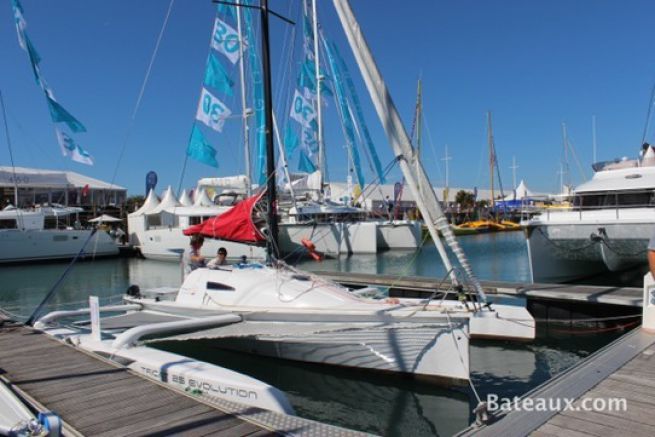
The Tricat 25 Evolution is the latest addition to the Tricat shipyard. This 7.70 metre long transportable trimaran has the particularity of folding up from 5.50 metres wide when sailing to 2.40 metres in transportable format. You will be able to discover it during the Grand Pavois which starts tomorrow.
A cleverly designed exterior
One might think that it was modelled on tricat 25 but only the central hull has been made from the same mold, albeit with a few modifications. On the outside, the folding principle remains the same, but carbon connecting arms and new floats profoundly alter the silhouette of the Tricat 25 Évolution . In addition to an aesthetic evolution, the shipyard also took the opportunity to add power to the trimaran . The sail plan has also been modified, giving it a more elegant appearance.
On the hull side, weight and rigidity have been taken care of by using a carbon-epoxy sandwich for the linkage arms, vacuum-infused like the central hull and floats. The Tricat 25 Évolution can be folded and transported without disassembly. The arms pivot aft, allowing the boat to fold.
Inside, the standard cockpit can accommodate up to 6 people, with plenty of storage space for a pleasant life on board . This is a spacious trimaran . Outside, the Tricat 25 is equipped with trampoline-covered decks. Last but not least, it has a shallow draught (20 cm), enabling it to get close to beaches.
This fast, lightweight trimaran is built from recyclable or low-impact materials, and designed in collaboration with Roland Jourdain's company Kaïros.

A layout that favours family cruising
Inside, there's a large double berth with two side berths for two more people. This trimaran is perfect for a family for a weekend or a week's sailing. The Tricat 25 Évolution also features a large interior saloon and galley area. In addition to electricity, solar panels help save energy.


Professional BoatBuilder Magazine
Folding multihulls.
By John Marples , Jan 28, 2023
Folding multihulls and their beam-reduction strategies.

A Farrier 33R trimaran with amas folded and secured on a road-legal trailer exem- plifies the advantages of adjustable- beam multihulls, which are easy to trans- port and store out of the water.
“I’ll be surprised if you can find space in the harbor for that thing,” I heard him say as my new 37 ‘ (11.3m) trimaran was about to be launched. I hadn’t given it much thought, but now this legitimate question was raised, and where to moor was the next issue at hand. Space, particularly width of a slip, becomes the limiting requirement. But then, space also is one of the attractive features of multihulls—deck space to move around on, free from the confines of the cockpit.
Step aboard any multihull and it is obvious how much real estate they offer. Even small models seem expansive. The beam of the typical catamaran is half its length, and trimarans are even wider, sometimes as wide as they are long. Aside from increasing space, beam also boosts stability without adding ballast. The early Pacific Islanders created these form-stable craft for fishing and interisland commerce and voyaging where natural island harbors were few, so the boats had to be light enough for crew to carry them up the beach. Today’s modern multihulls are still lighter than contemporary monohulls, but the larger ones preclude the option of dry sailing them from the beach. They require more marina space than monohulls, and the limited number of slips to accommodate them can be a problem. As someone once put to me, “Multihulls have a poor ‘stacking factor.’”
With catamarans and trimarans becoming more popular, they demand mooring solutions. Some marinas offer shallow-water slips to multihulls, typically at the inboard ends of docks, next to the seawall, because multihulls either have shallow keels or retractable boards. Some marinas also designate the end ties as multihull slips in areas not used for transients. Even though these boats protrude farther into the channel than monohulls, the extra space their beam occupies is relatively small. With multihulls crowding waiting lists for marina slips, builders were prompted to consider folding systems to “improve their stacking factor.”
Without ballast, smaller multihulls up to about 30 ‘ (9.1m) can be dry-stored on a trailer, and most launch ramps easily accommodate over-width boats. If the boat’s beam can be reduced to the legal highway width of 8.5 ‘ (2.6m), the owner can store the boat at home. Today, folding trimarans and catamarans are common sights on trailers in storage yards and backyards. Various folding systems have evolved to support this need, especially for the backyard builder. Some beam-reduction systems allow the boats to be folded and stored in the water in conventional-size marina slips, while other systems facilitate efficient storage or provide street-legal trailering.
Folding Systems
Basic folding systems are separated into several categories:
- take-apart akas, the simplest beam-reduction method
- telescoping akas (sliding beams)
- simple horizontal hinge
- complex horizontal hinge systems
- vertical hinges (swing wing)
- complex swing wing
The following overview of folding systems illustrates how these mechanisms work. It is not intended to be an exhaustive listing of available folding designs. I’ll address two-hull boats (catamarans and proas) first, followed by trimarans. Each type has its challenges and advantages. All are separated into two more categories: transportable boats and trailerable boats. The characteristic distinguishing between them is the time and effort required to launch, starting from an on-the-trailer folded condition. Trailerable implies the possibility of daily launching, requiring less than an hour from trailering to sailing. Transportable denotes a road-legal trailer package but with a longer assembly time to sail away. It might even take more than one trailer load, and considerable assembly time. Legal width in this category could extend to 10 ‘ (3m) wide if OVERSIZE LOAD signs are used (consult local laws). Transportable boats usually require seasonal transport with storage in the water during sailing season and dry storage in the winter. Both categories benefit from the ability to “go to weather at 65 mph” to reach any suitable launching site, even hundreds of miles from home. This opens the possible sailing venue to any water body with a launch ramp and road access, and some trailerable and transportable boats can be delivered anywhere in the world in standard shipping containers.
Catamarans and Proas

The WindRider 17′ trima- ran’s telescoping tubular akas are secured with pins
Hobie Cats and other beach cats are familiar sights around lakes, beaches, and harbors. They are usually built to 8 ‘ (2.4m) beam and do not need folding systems. The 19 ‘ (5.8m) Tornado class catamaran at 10 ‘ wide uses a side tilt-up trailer to reduce beam. Larger catamarans needing folding systems have greater challenges than trimarans of the same length, for a few reasons: The hulls are normally bigger (and heavier) than amas for the same length trimaran; the mast is stepped on the center of an aka, midway between the hulls, which means the aka must be extra strong; and there is no easy means of supporting the hulls while the beam is being expanded to the sailing position, requiring that the trailer have an expanding-beam function. As a result, folding systems are less common on cats and are usually of three types:
- folding akas along the centerline or to a center pod
- telescoping akas
- take-apart akas
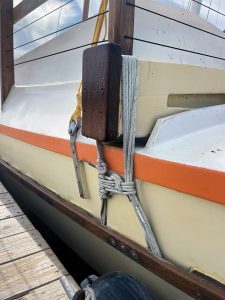
On this Wharram cat, the akas are securely lashed into “deck alleys.”
Designers have used telescoping akas, but production boats generally avoid the associated complexity and cost. The mechanically straightforward take-apart feature has successfully been used by many boats, like the 27 ‘ (8.2m) Stiletto Cat and others. Generally, the assembly of these boats takes some time and muscle, which relegates them to the transportable category. Stiletto Cat advertising suggests a four-hour setup time, but in reality, it is much longer. All the James Wharram–designed catamarans up to 63 ‘ (19.2m) are held together with rope lashings and can be dismantled for transport. The required time and effort are generally proportional to the length of the boat.
Note that the Gougeon 32 ‘ (9.7m) sailing catamaran is unique, at 8 ‘ wide, without folding capability but with a water ballast system to make up for the lack of form stability.
The large main hull of a typical smaller trimaran offers a larger interior space than a comparably sized catama ran, a deep footwell in the cockpit for comfortable seating, and a folding system for trailering with the amas connected to a well-supported main hull. In addition, the mast is stepped on the main hull, with the headstay attached to the bow, not to the akas.
Trailerable trimarans come in all sizes to about 32 ‘ long, with transportable designs somewhat longer. The latter types tend to have larger interior spaces and less complex connectives. To a certain extent, manufacturers were willing to add cost to the folding system to reduce setup time. Folding capability on or off the water also adds to the design challenges.
Take-Apart Aka Systems
This is the least expensive method and easiest to achieve for the home builder or the manufacturer. The akas may be built-up wood box beams or tubular metal. Each beam is secured to the hulls by through-bolts, bolted straps, plug-in sockets, or lashings. Tubular aluminum beams are the lightest but most expensive. Regardless of attachment method, the hulls must be supported in their respective positions for the akas to be installed. In small vessels, this can be an abbreviated procedure, but larger vessels will require a special trailer to hold the disconnected amas while on the road.
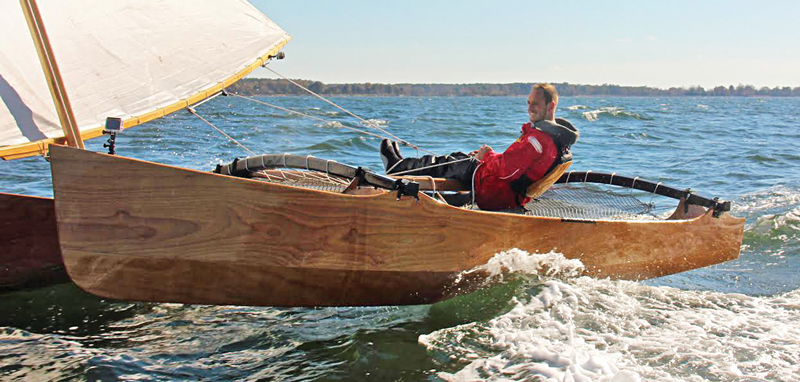
The Chesapeake Light Craft 15′ single outrigger canoe akas lash into saddles on both hulls.
Telescoping Aka Systems
The telescoping option is limited to boats where the total stack-up width and length dimensions of the hulls and fully retracted akas do not exceed the legal road limits. The WindRider 17 is a good example. The boat is supported on “high bars” on the trailer, leaving the amas free to be moved in or out. The simplicity of the akas and trailer-support system reduces cost and launching time.
In larger vessels, this system has been applied to reduce width for storage in marina slips. For these boats, the sliding system is large and complex, usually requiring some sort of power to make the telescope slide. Because the sliding mechanism requires a small clearance between the sliding members, the akas will move slightly during sailing, which is difficult to avoid.

The 1970s-vintage Telstar 26 features a simple hinge-down system with a bolted con- nection on deck and a bolted strut below.
Simple Horizontal Hinge Systems
Early trailerable trimaran designs often incorporated a simple hinged beam-reduction system to fold both sides down. Boats to about 25 ‘ (7.6m) with a 16 ‘ (4.9m) beam could be made to fold to 8 ‘ . At the ama end, lifting the hull, sometimes with attached wing deck, could require substantial muscle or a mechanical lift. Even for smaller boats this task may be beyond one person’s capability. Normally, bolts and plates between the members secure the hull for sailing. On the Searunner 25 and Constant Camber 26 (7.9m), double-hinged tubes are bolted to tangs on the main hull.

The Searunner 25 trimaran has a hinge mechanism on its metal-tube A-frame akas that secures with bolts at both ends.
Commonly, simple hinge systems require that the main hull be positioned rather high on the trailer so the amas clear the trailer wheels beneath. A disadvantage is that the trailer must be submerged more deeply than usual for the boat to float off. Compared to the Telstar system, the Searunner 25 offered some improvement by positioning the hinge point at the top of the cabinside, raising the folded ama slightly.
Complex Aka Hinge Systems
A complex system for folding multihulls, much like a garage door lift linkage, was developed and patented by Ian Farrier for his trailerable trimaran designs. It allows one person to fold or unfold the boat while it’s afloat. Before launching, the mast is stepped and secured with lower stays. Note that folded storage in the water for long periods is not practical because the immersed ama’s topsides will gather marine fouling. In addition, the arrangement of the support linkage arms has a very shallow angle with the aka, causing them to be highly stressed, which adds significant weight and cost.

Unfolding it requires help from friends.
A complex folding system I developed has only four attachment bolts and a wide-angle strut brace. It is very light but requires folding prior to launching. It relies on a simple roller dolly on a beam attached to the trailer to support the ama during folding and unfolding.
Swing-Wing Systems
In-water storage of folding trimarans is generally limited to swing-wing designs, where the hulls all float on their respective waterlines, either folded or unfolded. Many variations have been used in production boats, and among the most successful is the Quorning-designed Dragonfly. It has hinged arms supported by a “waterstay”— a diagonal cable under the arm to counteract cantilever aka loads. The outer end of the arm, on the ama deck, pivots on a single pin. The waterstay becomes slack when the boat is folded, leaving only the hinge to support the ama in the folded configuration. I’ve seen one folded boat that was damaged while moored at the dock in strong harbor waves when the ama climbed onto the dock. Swing-wing designs stored in the water must provide strong vertical support for the ama in the folded condition
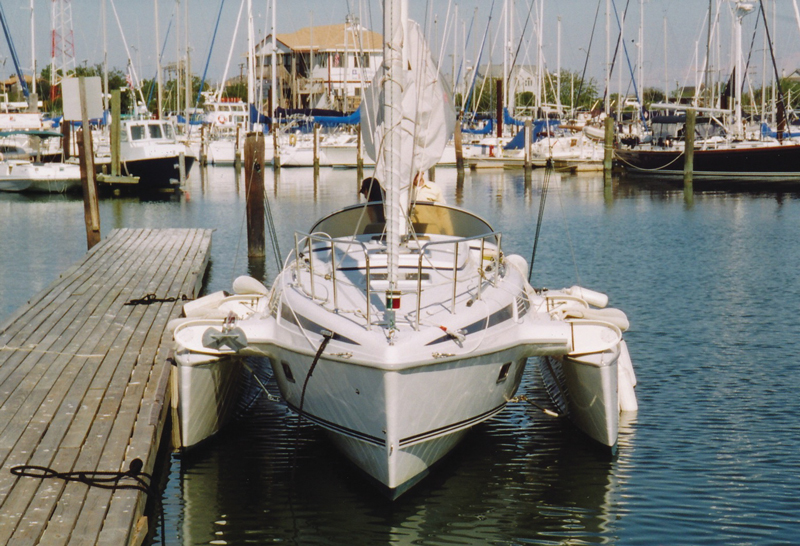
A swing-wing aka system on the Borg Quorning–designed Dragonfly 32 is further supported by a waterstay when rigged for sailing. The akas can be adjusted in and out while in the water and for storage at the dock.
The main challenge of the swing-wing system is to get all the pivot axes parallel because they must rotate about 90° without binding. If there is any depth to the structure, this accuracy is critical, as the pins or pivot axles could be quite long, so even a small inaccuracy will make the system difficult to assemble, let alone pivot smoothly.
Folding Multihulls with Flat Swing-Wing Akas
The most basic swing-wing system is the flat aka configuration developed by Jim Brown. He avoided the need for perfect parallel alignment of all hinge axes because the beams are not very thick, and the pivot-pin holes can have additional clearance. For the swing system to operate without binding, spacing of the pivot points must be identical on all the swing arms. The system’s downside is strength, because the aka must support all the heeling loads in a relatively narrow beam. For some boats, a waterstay may need to be added to increase cantilever strength and reduce deflections when sailing.
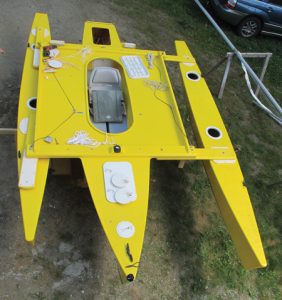
The Seaclipper 16 flat swing- wing akas are made from common dimensional lumber and pivot using steel bolts.
A logical improvement in strength for swing arms is to add a truss, with triangulated strength that will easily bear all the heeling loads from the ama. Here again, it is essential that pivot axes be in perfect alignment to avoid binding. To my eye, open trusses in sleek yachts are never beautiful, but they offer higher strength for lower weight.
Complex Swing-Wing Systems
If the akas are not flat along their full length, it is more difficult to achieve a smoothly pivoting system. My latest boat, Syzygy (pronounced, sis-a-gee), is a case in point. Flat akas offer little variation in styling—flat is flat. To add underwing clearance and more attractive aesthetics, many designers favor the arched aka. This configuration allows the aka to approach the ama hull from above and connect through the deck for more usable immersion of the ama buoyancy, and to keep the aka above the wavetops.
This system has arched akas with an upward angle (dihedral) as they extend from the main hull and descend with a smooth curve onto the ama deck. The pivot axis must also be inclined, normal to the surface, to allow it to pivot. To make life simple, the vertical centerline of the ama is inclined inboard at the top by the same amount, which aligns all the pivot axes with the ama vertical centerline. If the beam is level fore-and-aft, when the ama is folded inboard, it is positioned rather low, due to the arch. To compensate, the akas must be given a negative angle of attack to make the folded ama arrive in the same position as a simple flat aka system. It’s a good challenge for any boatbuilder to get it right and a good use of a digital level. The angles in Syzygy were 8° dihedral, and a nega tive 5° angle of attack. The aka pivot surfaces must be perfectly parallel on both ends—at the inboard aka pivots and the ama deck pivot tables.
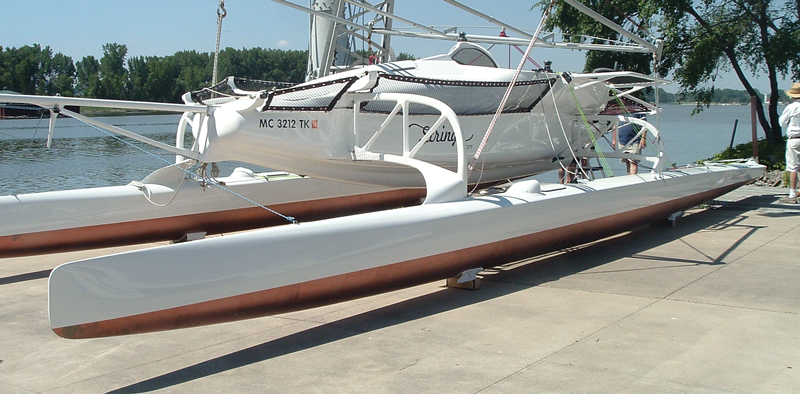
Jan Gougeon designed and built strings, a 40′ swing-wing catamaran with carbon- tubular-truss swing akas built over foam mandrels.
A late iteration of the Telstar 26 became the Telstar 28 with a vertical-axis swing-wing system. This production boat is no longer manufactured but was unique for its faired wing and attempt to hide the folding system from view. It also featured an electric linear drive to fold/unfold the heavy akas.
For transporting folding multihulls on the highway, road trailers must have some specific attributes to properly support the hulls. Most models use transverse cradle supports under the hull at major interior bulkhead positions. It is important to install bow guides on the trailer to get the hull to settle in exactly the right place when retrieved from the water. Rollers beneath the hull are not recommended, as they tend to distort it and potentially cause damage. The amas require enough support so the folding mechanism is not carrying the load when being towed.
For swing-wing boats, there is a significant change in the center of gravity between folded to unfolded configurations. Normally, the amas swing back when folded and swing forward for the sailing position. If the trailer has the proper tongue weight for towing on the hitch with the boat folded, the weight will increase when unfolded. For trailers with telescoping tongues, tongue design must accomodate that weight; otherwise, the extended tongue may bend severely during launching or retrieval.
Homebuilt wooden trailers are popular for these specialized boats, and some designers provide plans for them. Without much metal in them, they will probably float, which sometimes leads to difficulty at launching. Adding some steel channel to the bunks can solve that. However, floating is not an undesirable feature if a trailer floats level but is submerged enough to maneuver the hull into the bunks, and the hull settles into the right place automatically. Floating trailers also never run off the end of the ramp.
Conclusions
There’s truth in the humorous claim that “the new family yacht has to look good behind your SUV.” But while many of the latest small boats are daysailers, folding multihulls have expanded the trailerable and transportable boat size to include those with weekend cruising capability, up to about 32 ‘ . As we’ve seen, those essential folding or retraction mechanisms are not simple and must be carefully designed and engineered, even by the home builder. But for owners of these boats, seasonal storage and slip availability are no longer problems. And the overall reduction in total cost can bring owning a boat within reach for many more people. What’s not to like about that?
About the Author: John Marples has designed, built, and rigged many sail- ing vessels. His portfolio includes doz- ens of wood-epoxy composite sailing and power multihulls to 110′ (33.5m). He operates Marples Marine , a multihull design and engineering firm in Penobscot, Maine
Dieter Loibner | Professional BoatBuilder Magazine
Nomenclature
Multihull designers have developed some useful, specific names for components, mostly derived from the Pacific Islander language.
Aka (ah-kah) refers to the crossbeam structure of any multihull. Designers used to call them “cross-beams,” but writing that on hand-drawn plans took up too much space and time, so this shorter Polynesian name became the standard.
Ama (ah-mah) is the Polynesian name for the outer hull of a trimaran or proa. They were formerly named “floats” or “outer hulls” (never pontoons), but again, ama is shorter.
Vaka (vah-kah) is the Polynesian name for the main (largest) hull of a trimaran or proa. Since it can be confused with the other names and is not very descriptive, most designers have opted for the term main hull.
Waterstay is a diagonal stay, metal or synthetic rope, below the aka, between the main hull near the waterline and aka near its outboard end. This stay counteracts the upward load from ama buoyancy when the ama is immersed.
—John Marples
The Crossbeam (Aka) Structure
T he essential function of any crossbeam (aka) system on a multihull is to structurally connect the hulls in a way that resists all the forces generated when sailing. Heeling forces from lift on the sails must be transferred to the leeward hull by the aka structure. The forces on the akas are complex, composed of cantilever bending due to heeling loads, twisting of the structural platform, and horizontal bending caused by drag from the ama’s forward motion through the water. The heeling force, resisted by the buoyancy of the ama, pushes up, causing cantilever bending loads in the akas similar to the forces on an airplane wing. Torsion is created when the sails’ lift pushes the leeward ama bow down, while the shrouds supporting the mast pull the weather-side ama stern up. Drag from the leeward ama tries to bend the akas toward the stern, and forces from the windward shroud tend to pull the aka forward as well as up. These forces all act together at the attachment points on the hulls. In most cases, torsion is resisted by the tubular hull and cabin structure itself. Heeling is countered by the cantilever strength of the aka beams and is sometimes strengthened by diagonal waterstay cables beneath. Drag forces can be resolved by the fore-and-aft strength of the akas or by adding diagonal cables between the akas. Each folding system must accommodate these loads through all the pivoting components in the structure.
Of key interest in aka design are the loads imposed on the ama hulls by the seaway when sailing to windward. These hulls are subject to significant loads on the outboard sides. The windward ama is pummeled by wavetops, and the leeward ama is pushed sideways due to leeway. Since the aka system is characteristically attached through the ama deck, these forces are trying to rotate the ama keel inboard, toward the main hull, in either case. The same is true for catamarans, concerning the aka loads where they emerge at the hull inboard sides. These loads can be calculated to estimate the strength required for any configuration and should be part of the design’s stress analysis. If centerboards or daggerboards are located in the amas, those rotating forces are significantly increased.
Of further interest in swing-wing designs is the clearance between pins and brackets in vertical pivot mechanisms. When sailing, the forces at the hinge pins can change from positive to negative repetitively, creating noise and wear. The wear will eventually elongate the holes, reduce pin diameter, and become a maintenance problem. Designs like the flat wing can be tightened to eliminate movement, which will eliminate wear. Amas with waterstays tend to put the akas in compression and stop the vertical deflection that would be normally carried through the hinge pins. In that case, the pins would be loaded in only one direction and not be subject to cyclic ± loads. —J.M.
Read more Construction , Design articles

- Infusing a Workboat Hull with Elium
Recyclable thermoplastic resin and a crew of trainees are put to the test building a commercial fishing boat at DJ Marine in Pointe-Sapin, New Brunswick.

- Counting Carbon with LCA
A yacht designer and experienced builder of composite boats test-drives life cycle assessment software customized for the marine trades.

- From Langan Design Partners, a Classic Cutter
Designing, engineering, and building sailing yachts 90′ (27.4m) or more in length once was common in the U.S. It’s happening again at Rockport Marine in Maine: Project Ouzel, a 95′… Read more »

Recent Posts
- Volvo-Penta’s Bid to Future-Proof IPS
- AIRMAR Achieves World’s First OneNet Product Certification
- Companies (91)
- Construction (115)
- Design (168)
- Drawing Board (11)
- Education (29)
- Environment (18)
- Events (22)
- Materials (55)
- Obituary (18)
- People/Profiles (49)
- Products (18)
- Propulsion Systems (35)
- Racing (17)
- Repair (37)
- Rovings (326)
- Short Cuts (3)
- Sponsored Partner News (19)
- Systems (80)
- Task Sheet (1)
- Uncategorized (29)
- Wood to Glass (8)

ProBoat.com Archives
- The genesis
- Production methods
- Engine type
- Eco-responsability
- NEEL-TRIMARANS GROUP
Explore new horizons
The leen 56 combines all the advantages of the travel yacht, dynamic appearance, outstanding seaworthiness and optimised interior volume. this trimaran exudes balance and serenity., photos and videos, leen 56 exterior.
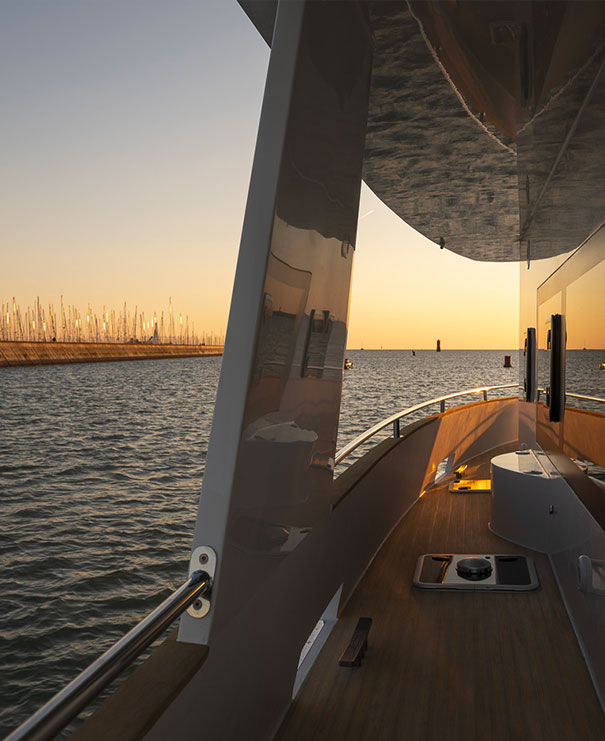
LEEN 56 cruising

LEEN 56 interior

EASE OF MANEUVERING
Leen 56 launch, leen-trimarans launch, air conditioning on board, leen 56 guided tour, worldwide launch leen 56, leen 56 video, cooling on board, specifications.

On the main deck of the LEEN 56 is a large, fully equipped galley, a comfortable dining area and the owner's cabin. At the front of the boat is the wheelhouse entirely glazed, with navigation equipment and a cosy saloon with an L-shaped sofa, which allows you to relax and enjoy the view. A gangway door gives direct access to the deck to facilitate docking, undocking and mooring manœuvres. The owner's suite , with a majestic view over the sea thanks to the large glass panels, extends over two levels on the starboard side of the trimaran. The bedroom is on one level with an island bed, a desk, a bookcase, large cupboards and a wardrobe. The bathroom, accessible by a direct descent, occupies the lower level of the float. It offers 2 basins, a shower and a separate toilet. The standard layout of the LEEN 56 includes 3 double cabins with shower rooms: the owner's cabin on two levels, a guest cabin located at the front of the boat in the central hull with its separate shower room and another guest cabin located in the port-side hull with an en suite shower room. The layout of the LEEN 56 can be completed with 2 additional cabins at the rear of the boat with single and/or double beds and separate shower rooms. In a 5 cabin layout, the LEEN 56 can accommodate up to 11 passengers. The quality furniture is designed in light coloured wood and made by quality cabinetmakers. The layout and fixtures of the outdoor areas (cockpit and flybridge) are left to the buyer's desire. The flybridge is accessed from the cockpit via an external staircase. Under the steps to the flybridge is a heated wardrobe for jackets, foulies, sea boots or diving suits . Protected by the high bulwalk encircling the deck, the exterior circulation on each side is carried out along covered exterior gangways, a distinctive sign of true ocean-going vessels.
Privacy overview.
- Legal Notice
- Private area
Bateaux.com
Trimaran, des voiliers stables performants et toujours amusants
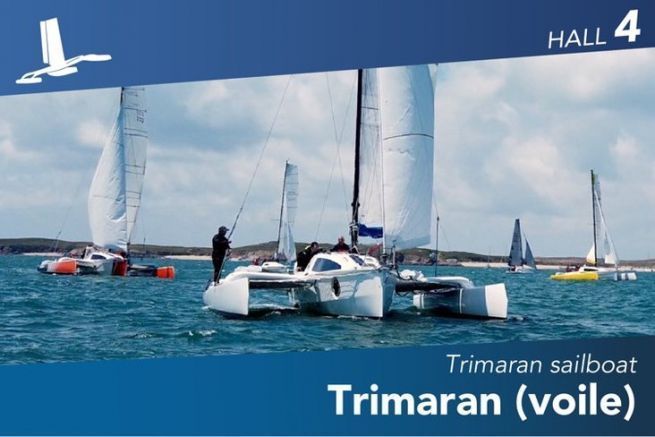
Goutez au trimaran et il est difficile de revenir en arrière. Ces voiliers légers, facilement transportables offrent un comportement marin très apprécié. Et quand un aménagement s'y ajoute, ils deviennent de parfait compagnons pour nous guider en croisière.
Astus 14.5 4,35
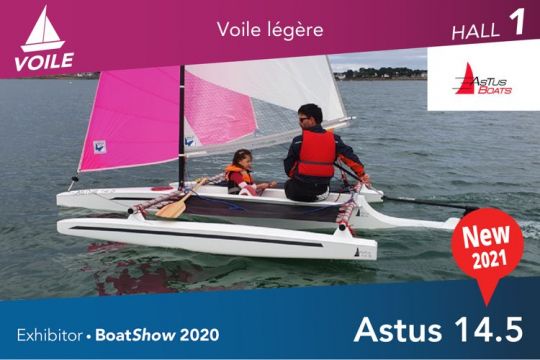
Renouer avec la voile facile. Limiter les contraintes de préparation avant de naviguer. Voilà le programme qui a conduit le chantier Astus à lancer ce nouveau petit modèle. Mise à l'eau rapide, mât emplanté sans haubanage. Juste un safran et on part glisser sur l'eau. Dessiné par VPLP, ce joli trimaran (qui peut aussi s'utiliser en prao) offre de belles sensations.
Découvrez l'Astus 14.5
Weta 4,40 m
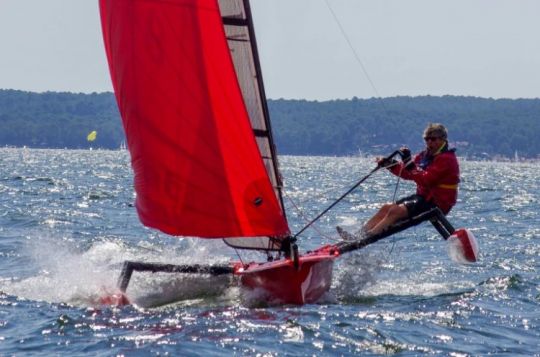
Voilà un petit trimaran qui donne la banane à son pilote. Très stable, ce voilier est aussi joueur. Son montage est très simple et rapide. Replié, il n'est pas plus large qu'un laser . Disponible à 15 000 €, ce voilier dispose aussi d'une sympathique communauté qui n'hésite à pas à régater à armes égales.
Découvrez le Weta
F 22 7,00 m
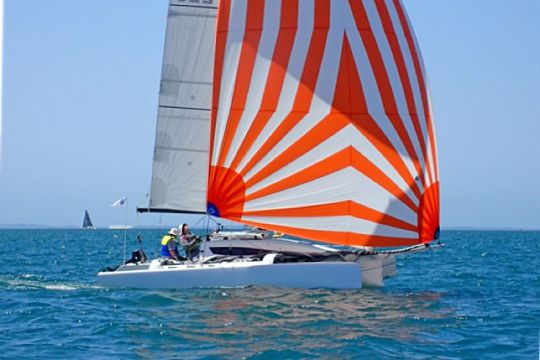
Dessiné par Ian Farier et produit désormais aux USA, le F22 est un trimaran repliable construit en série (ses plans ne sont plus en vente pour la construction amateur ). Il se replie en remontant les bras vers le ciel, un système de pliage inventé dans les années 70. Ce F22 est disponible en version croisière, mais aussi en version boostée avec un mât plus haut et une surface de toile supérieure. De quoi faire parler la poudre à cette petite unité très marine.
Découvrez le F22
Astus 20.5 5,95 m
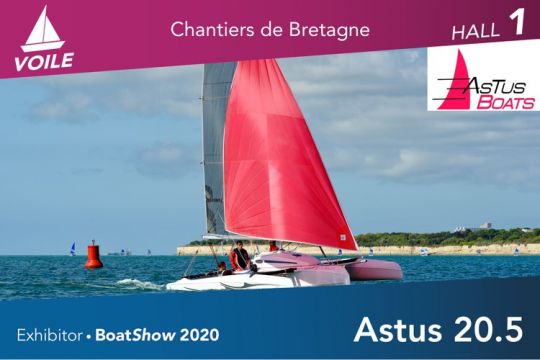
Repliable et transportable, l'Astus 20.5 est le plus petit des trimarans habitables. Cette nouvelle version (la 4e du nom) est dessinée par VPLP ce qui lui confère des vitesse et performance appréciable. Le système de tube télescopique pour les bras, cher au chantier depuis l'origine, offre une manipulation simple et rapide.
Découvrez l'Astus 20.5
Tricat 6.90 6,90 m
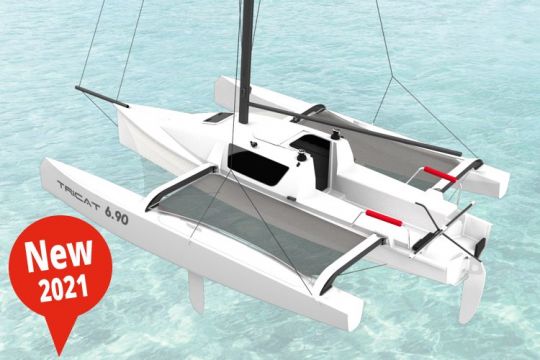
Lancé au printemps 2021, ce nouveau Tricat arrive avec un tarif agressif : 52 500 € TTC pour un trimaran qui permet à la fois de glisser rapidement en régate ou bien de se balader en famille. Ce trimaran de 6,90 reste repliable et transportable comme toute la gamme du chantier breton Tricat.
Découvrez le Tricat 6.90
Diam 24 7,25 m
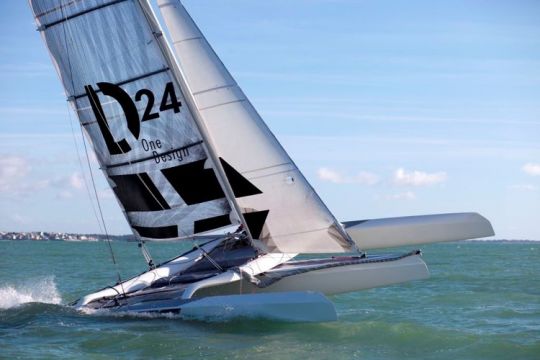
Le Diam 24 est un trimaran de régate monotype . Tout le monde a le même ! Il a été dessiné pour répondre à la croissance exponentielle des budgets des voiliers de courses. Simple, rapide, facile à naviguer comme à transporter, le Diam 24 est un support amusant pour naviguer ne flotte et se mesurer à d'autres marins. Une classe en vogue qui tend à se développer à l'international.
Découvrez le Diam 24
Tricat 25 Evolution 7,70 m
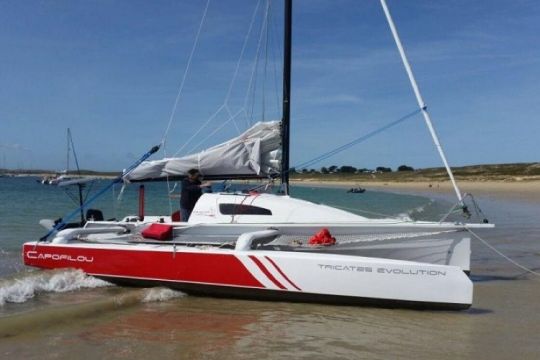
Avec des nouveaux bras en composite (fini les tubes alu) et des flotteurs plus longs (plus 60 cm), le Tricat 25 Evolution offre un comportement encore plus marin. Il reste toujours repliable avec les bras de liaison articulés. Sa cabine permet de loger 4 personnes (3 adultes et 2 enfants) et dispose d'un grand cockpit en plus de l'espace sur le trampoline.
Découvrez le Tricat 25 Evolution
Libertist 703 6,99 m
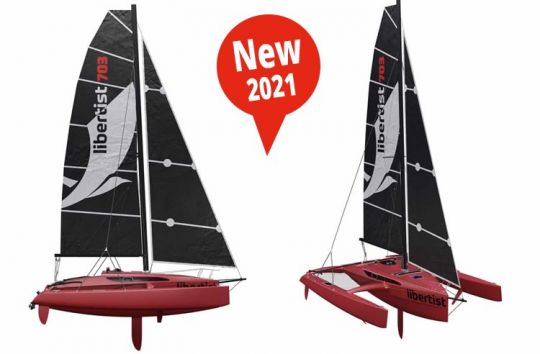
Comme son grand frère le 853, le Libertist 703 est équipé de plans porteurs sous les flotteurs. N'imaginez pas voler avec ce trimaran conçu pour la croisière, mais ces appendices soulagent les coques et limitent les plantages dans les vagues . Comme en plus ce trimaran est repliable et transportable, il possède beaucoup d'atouts pour en faire notre chouchou…
Découvrez le Libertist 703
Tricat 30 9,14 m
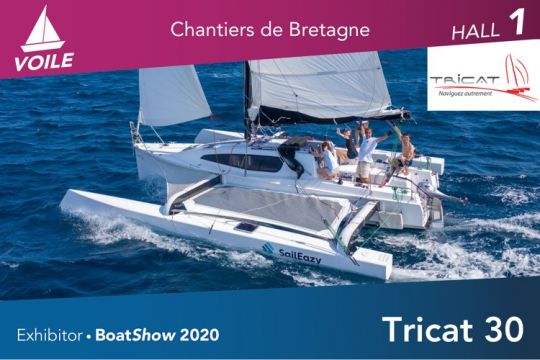
C'est le plus grand modèle du chantier breton Tricat. Ce trimaran repliable de 9 m permet d'imaginer la croisière confortable en famille. Une version boostée avec mât et plan anti-dérive revu en fond un bolide très rapide. Pour s'amuser aussi en régate.
Découvrez le Tricat 30
Corsair 880 8,80 m
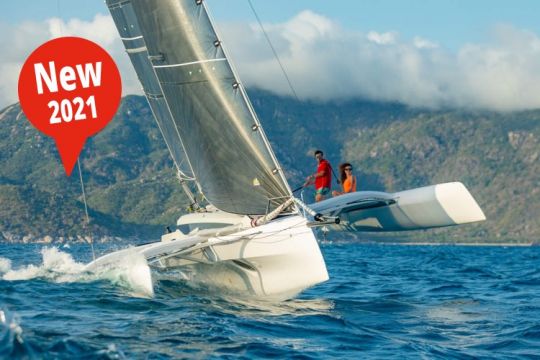
Le Corsair 880 est un nouveau trimaran repliable et transportable lancé en 2020. C'est un multicoque rapide, adapté tant à la croisière familiale que pour la régate. Il propose un espace intérieur aménagé à l'arrière, un carré large et spacieux et une cabine avant pouvant accueillir confortablement deux adultes. En abaissant la table du carré, jusqu'à cinq couchettes sont disponibles.
Découvrez le Corsair 880
Trimax 1080 10,80 m
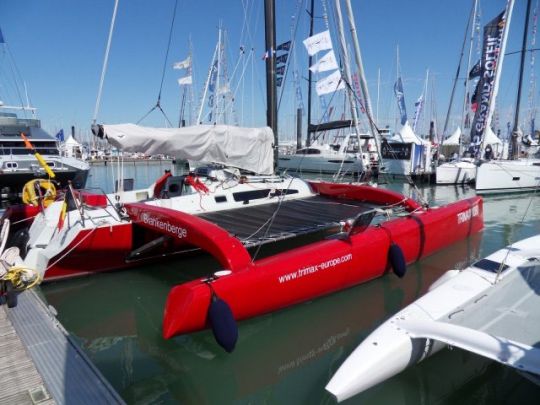
Le Trimax 1080 est un grand trimaran repliable. En démontant les flotteurs, on peut même réduire la largeur à 2,55 m pour qu'il soit transportable sur la route. Dans la cabine on trouve un carré et une cuisine avec 2 cabines (avant et arrière) qui offre 2 couchages double. Une 5e personne peut dormir dans le carré. Une salle d'eau avec WC se trouve en avant du carré.
Découvrez le Trimax 1080
Dragonfly 40 12,40 m
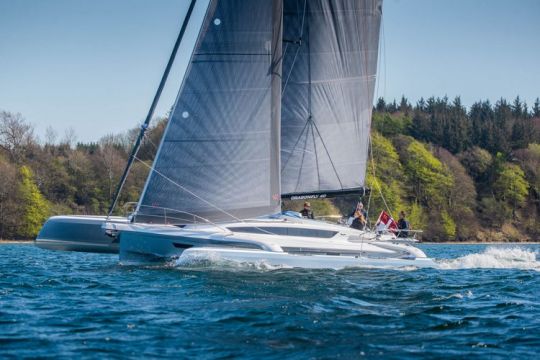
Lancé en 2020, le chantier danois a lancé le Dragonfly 40. C'est le plus grand modèle de la gamme. Avec ses 2 barres à roue malgré l'étroitesse du cockpit, ce bateau est avant tout un engin de croisière. En effet ses aménagements bien finis laissent place à 2 cabines même si celle sous le cockpit manque un peu de hauteur sous barrots.
Découvrez le Dragonfly 40
Neel 43 12,90 m

Le Neel 45 a été le premier modèle qui a lancé le chantier Neel. Il est désormais remplacé par le Neel 43 qui est dessiné par Lombard. Ce trimaran de croisière reprend le concept du carré déporté sur bâbord et ouvert sur le cockpit arrière. Sur tribord est logé une splendide cabine propriétaire avec une vue mer imprenable.
Découvrez le Neel 43
McConaghy Tri53 16,20 m
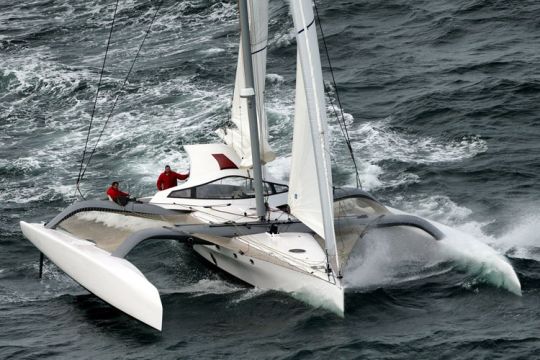
Dessiné et construit comme un trimaran de course, le Tri53 affiche des prétentions hors norme. Le chantier McConaghy est connu pour ses réalisations haut de gamme one-off. Imaginé pour la croisière très rapide, le Tri53 possède un mât aile rotatif et inclinable. Léger avec un assemblage en infusion fibre de carbone, ce trimaran et doté d'un parc électrique étudié pour la légèreté.
Découvrez le McConaghy Tri53
Rapido 60 18,10 m
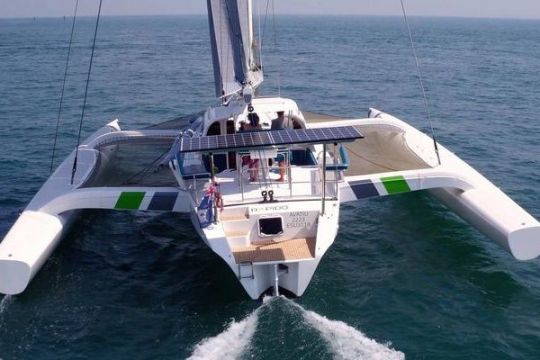
Avec une gamme qui propose 3 modèles (40, 50 t 60 pieds), ce chantier offre une nouvelle vision du trimaran de croisière. Dessiné par Morrelli & Melvin, des spécialistes du multicoque, ces voiliers sont conçus pour une navigation facile, juste manœuvrés par son propriétaire (pas besoin d'équipage). Si les plus petits modèles sont repliables, le 60 est une plateforme raide et rapide. Il offre vitesse , sécurité, performances et même luxe.
Découvrez le Rapido 60

Review of nine small, folding day-trimarans (2010)
by mike waters n.a.

As much as I like the basic concept of Jim's new boat, there are a couple of aspects that I need to mention. To put a light rig from a Hobie 16 on a boat that is FAR heavier and more stable than the boat for which it was originally designed, might prove too much for this mast, especially since the shrouds are more inboard than normal—so raising the mast compression. Normally, a Hobie would just 'go over' and so relieve the load—but not this beamy 800 lb twenty-footer! Also, the too-typical, puny 4-oz sail cloth of a regular Hobie 16 sail, is hardly man enough for this job. It's certainly a low cost start up solution and we've all admired Jim for his support to those with lesser means, but I think any builder should plan on something more substantial to be a better match for this cruiser. Finally, as the ama looks to be quite substantial in volume (guessing about 800 lbs buoyancy?), I have some concern for the strength of the single plank akas (cross beams) that act as swing arms for folding, should the builder decide to choose regular construction lumber. Sooner or later, someone will push this boat hard enough to bury an ama and that's a LOT of leverage on those arms, even if they are cleverly designed to act like huge flexible wooden leaf springs. But without seeing the details, I can only suggest that some good laminated material might be in order for these parts and perhaps Jim's plans already call for that or even some added carbon here as well. But I like the general concept and even though the boat will be no speedster, it's a design that can give a young couple on a small budget, a lot of weekend pleasure provided the conditions are within what the rig and swing arms can take.

- This particular Performance Index is simply a product of the principal things that affect multihull performance (LOA × BOA × Sail Area) all divided by the listed Weight. By taking the square root of this value, you then get a figure that very roughly reflects speed for comparison purposes. Yes, I agree there are a lot of factors NOT taken into account with this crude approximation, but the base figures used are easy to find and at least the general trend is indicated—and quite fairly so I believe.
TRIKALA 19 The Trikala 19 is from the board of imaginative designer Kurt Hughes. This boat was actually in production for a while in Spain but since then, a few have also been built by amateurs. A couple reportedly even cruised the Mediterranean in one! This is a boat design that always frustrated me—perhaps wrongly so.

For me as a designer, the looks of a boat are almost as important as its performance and the Trikala looks quite stunning from the bow, with its long fine entry and streamlined deck lines. But then, as it opens out to encompass a very wide cockpit aft, it always appeared to me that something distracted the designer or he just lost interest, as the view from the stern quarter is not so elegant. It's no doubt practical but it's a shame that its wonderful efficient appearance from the bow could not in some way be maintained at the stern. But with that very personal comment aside, this is an interesting boat with no doubt a good performance. It would be a particularly interesting boat to build for someone wanting to learn about composite construction with a larger boat in mind 'down the road', as the Trikala is lightly built of foam core under fibreglass skins and would therefore provide a good learning experience. The boat does not fold in a conventional way but like some other small designs by Kurt, uses a sliding system with tubular akas, the port ones, sliding into tubes with Teflon runners behind the starboard ones—so the two sides are not exactly symmetrical—a factor that some potential buyers find disturbing, though the difference is purely cosmetic. (The larger 7 m, L7 by Mike Leneman, also uses a similar sliding system – though in this case he uses fiberglass channels—see my REPORT on SMALL TRIMARANS for more on the L7, available through my website.)

W17 This design of mine was created during 2009 and completed in 2010. It's hard to review your own boat designs without being accused of inevitable bias, so I will simply tell you about it and point out the features I've incorporated and why. However, time has now shown [2020] it's as good as I had hoped and expected her to be.
This is a primarily a boat 'to just enjoy sailing in'. She's designed to be comfortable, way drier than average, fast and efficient and is just at home on a weekend camping cruise as on the circuit. With several boats now [2020] having each sailed and cruised over 1000 miles and with open sea passages of up to 60 miles safely accomplished, she is certainly proving very capable in experienced hands, employing intelligent sail reduction when things get rough. Her seemingly simple hull forms give a very high efficiency and she has proven quiet and dry through a chop and with her wing mast and unique ama shape, shows an unusual ability to climb to windward with minimal leeway. [Following an independent test and review by Wooden Boat Mag., I was asked to explain why the W17 performed so well with such simple shapes and my reply to this was published in the prestigious Professional Boatbuilding magazine #169 .. and is available to read on this website under 'Published Articles'].
Sailing this boat is indeed a magical experience and dozens of boats are now (2020 update) being built in over 30 countries. She's a little more time-consuming to build than others her size, but numerous owners have since dubbed her, 'The Miata of the Seas' . For them, a few more hours is well worth the effect and this boat will take you to a whole new level above any production boat of this size out there .... and also cost you less.

Comparison Chart (created in 2010)
| Model >> | Fulmar 19 | Windrider 17 | WETA 4.4 | Seaclipper 20 | Discovery 20 | Trikala 19 | Strike 18 | Cross 18 | W17 |
|---|---|---|---|---|---|---|---|---|---|
| Designer | Blackline Prod | Jim Brown | Weta Marine | Jim Brown | Chris White | Kurt Hughes | Richard Woods | Norm Cross | Mike Waters |
| Description | Cruise Tri | Day Tri | Sport Tri | Cruise Tri | Day Tri | Day Tri | Cruise Tri | Day Tri | Day Tri |
| Length | 5.8m / 19' | 5.3m / 17' | 4.4m / 14.4' | 6.1m / 20' | 6.1m / 20' | 5.8m / 19' | 5.5m / 18' | 5.49m / 18' | 5.2m / 17' |
| Beam OA | 3.35m / 11' | 3.4m / 11' | 3.5m / 11.5' | 4.72m / 15.5' | 4.65m /15.25' | 4.12m / 13.3' | 4.3m / 14.1' | 3.57m / 11.6' | 4.2m / 13.8' |
| Folded | 1.83m / 6' | 2.4m / 8' | 1.7m / 5.6' | 2.6m / 8.5' | 2.6m / 8.5' | 2.44 / 8' | 2.4m / 8' | 1.98m / 6.5' | 2.2m / 7.2' |
| Float volume | Low | Medium | Low | Med-high | Med-low | High | Medium | Medium | Med-high |
| Weight listed | 118kg / 260# | 145kg / 320# | 100kg / 220# | 363kg / 800# | 238kg / 525# | 245kg / 540# | 272kg / 600# | 181kg / 400# | 190kg / 420# |
| Sail Area m² / ft² | 7.43 / 80 | 13 / 139 | 11.5 / 124 | 20.4 / 220 | 21.8 / 235 | 19.25 / 208 | 19.2 / 204 | 16 / 175 | 18.6 / 200R |
| Sail source | Custom | Custom | Gaastra | Hobie 16 | Custom | Beach cat | Beach cat | Custom | Custom |
| Construction Matl | Vinylester | Polyethylene | Glass/foam | Ply-epoxy | Veneer-epoxy | Composite | Ply-epoxy | Ply-epoxy | Ply-epoxy |
| Cross beams - akas | Vinylester | Alloy tubes | CF tubes | Wood | Wood | Alloy tubes | Alloy tubes | Box beams | Box beams |
| Estimated Matl. Cost | ~$8000 | ~$9500 | ~$13000 | ~$4000 | ~$5000 | ~$6000 | ~$4000 | ~$3500 | ~$4000 |
| Accessories | Vinylester | Al-alloy | Carbon | Hobie 16 | x | x | Cuddy | Wood | Wing mast |
| Features | s | F&A sitting | CF Mast | Swing arms | Beam fairing | Telescopic | Hinged | Hinged | Hinged+fairing |
| Plan Cost | N/A | N/A | N/A | $250 | $295 | $500 | ~$230 | $20 per sheet | $195-> 230 |
| Appearance | Kayak style | Day cat style | Day cat style | Large cockpit | Large cockpit | Large cockpit | Large cockpit | Large cockpit | Large cockpit |
| Year of availability | ~1995 | ~2002 | 2007 | 2010 | 1986 | ~1995 | 2009 | ~1980 | 2010 |
| Comfort | good for 1 | good for 2 | sport sailing | very good | excellent | very good | very good | good | excellent |
| Space | 1 | 2 | 2 | 4 | 4 | 4 | 3 | 3 | 3 |
| P.I. = L*B*SA / Wt | 64.3 | 81.2 | 93.3 | 85.2 | 136.5 | 97.3 | 86.3 | 91.3 | 112 |
| Sq.Root of Perf.Index | 8.01 | 9.01 | 9.66 | 9.23 | 11.7 | 9.86 | 9.29 | 9.55 | 10.6 |
| Rough speed | comparison | ||||||||
| YOUR RATING?? |
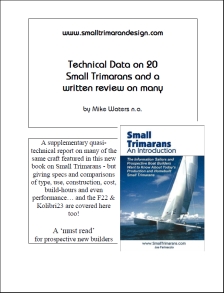
- News & Trends
- Monohull sailboats
- Exhibitions
Trimaran Astus 14.5 cruising transportable

Characteristics
4.3 m (14'01" )
0.15 m (0'05" )
5 m² (54 ft²)
Description
No catalogs are available for this product.
Other Astusboats products

- Open sailboat
- Cruising sailboat
- Trailerable sailboat
- Coastal cruising sailboat

16 Best Trimarans For Sailing Around The World (And a Few For Daysailing)
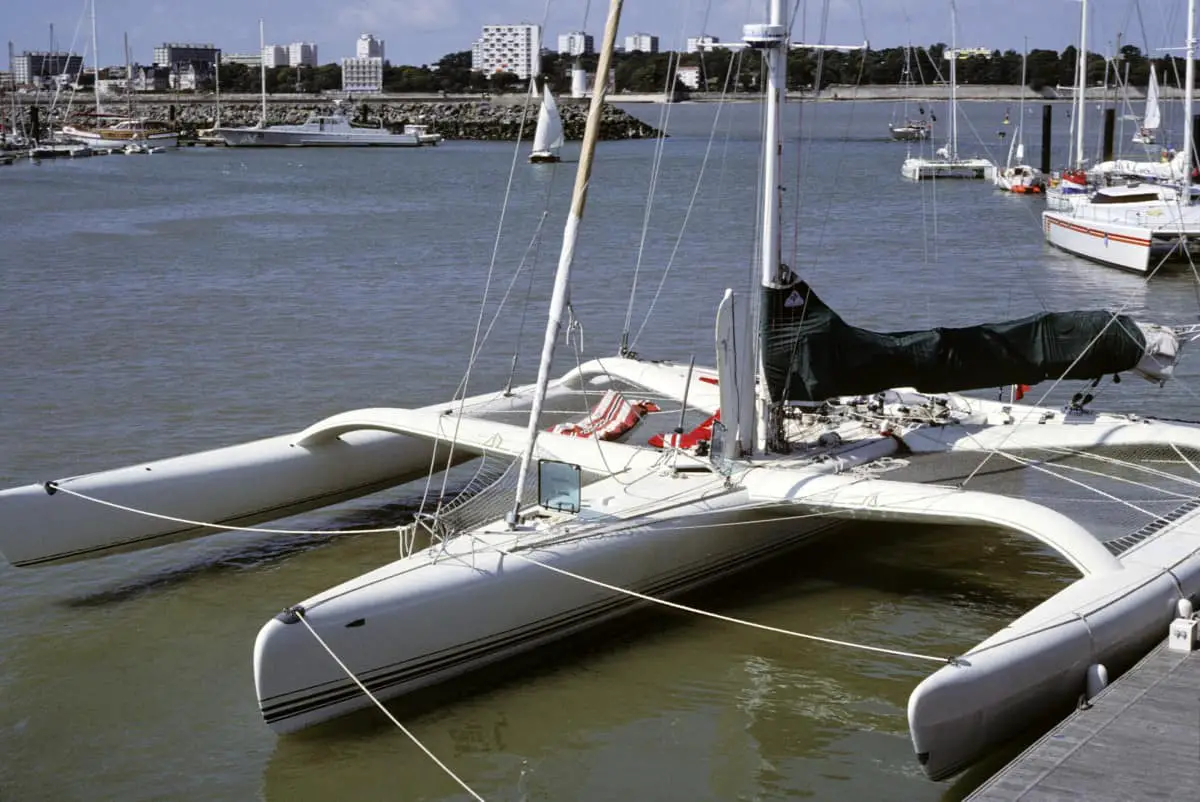
As an Amazon Associate, we earn from qualifying purchases. We may also earn commissions if you purchase products from other retailers after clicking on a link from our site.
Trimarans are growing in popularity worldwide, due to their light construction and high stability these multihulls are even faster than catamarans. Trimarans are still one of the lesser-known boat types so in this article ill be checking out some of the most popular models.
The best trimarans include:
- The Neel 43
- The Neel 47
- Dragonfly 28
- The Pulse 600
- Corsair 37
These tris are built with your safety in mind while also packing powerful speed and a wide array of comfort features to optimize your sailing experience , some are even foldable making them possible to load on a trailer and transport to the sailing destination of your choosing.
In this article, I have created a list of the 16 best trimarans in the market and their unique features. You’ll also learn the best options for different purposes such as circumnavigation, weekend sailing, racing, and more.
Table of Contents
What Is a Trimaran?

A trimaran is a multi hulled sailboat with three individual hulls; the main hull ( vaka ) and a pair of outrigger hulls ( amas ). These smaller outrigger hulls are attached to the main hull using beams.
While trimarans have a rich history dating back nearly four millennia, these types of sailboats have only gained popularity in the late 1900s and early 2000s.
Trimarans are primarily used as personal boats for sailing enthusiasts or racing. These sailboats draw their versatility from their lightweight design, making them faster and easier to handle at sea when compared to single-hulled boats (monohulls). Additionally, the three hulls also contribute to better stability, making it very hard to capsize (although more likely than a cat according to this study)
Trimarans come in various sizes, and some can be as small as 19 feet (5.8 meters) in length, while others go up to 60 feet (18meters). They’re also used for different purposes. Most trimarans are used for racing and recreational purposes, although some units are still used as ferries.
As with all things, to find out which is the best we need to understand what it will be used for. There is a big difference in requirements between a boat used for day sailing compared to offshore around the world sailing.
The list below highlights the best trimarans for different purposes.
Best Trimarans For Cruising, Liveaboard and Sailing Around The World
The Neel 43 is a French trimaran best suited for cruising. Its key features include:
- Easy maneuverability on the open sea by only a small number of crew members
This unit is also built for comfort, ideal for more extended travels. This 43-feet (13-meter) trimaran is also made with recyclable and bio-sourced materials, highlighting the manufacturer’s commitment to environmental consciousness.
This trimaran has a base price of €329,000 excluding VAT. This translates to approximately $370,138.
2.Neel 47 Possibly The Best
Named the best full-size multihull for 2020, the Neel 47 is a strong contender for one of the best trimarans in the market. This 47-foot (14.3-meter) long trimaran features optimized exterior and interior ergonomics for a unique design and look.
Still on design, the Neel 47 is ideal for couples looking to take a weekend off or spend some time as liveaboard. It has a spacious owner’s cabin and two bedrooms. It also features a spacious living room and kitchen and is optimized to ensure comfort for a couple.
The Neel 47 also has two basic guest cabins so your friends or children can tag along on your sailing adventure. Accordingly, this unit is ideal for those looking to explore the sea for the sheer joy of sailing.
The Neel 47 comes at a 571,139 euro ( $643,600 ) price tag, excluding VAT.
3. Rapido 60 The Fast and Comfortable Circumnavigator
The Rapido 60 offers a blend of performance, safety, and luxury, making it one of the best options for bluewater sailing. Measuring 59.3 feet (18 meters) in length, the Rapido 60 is an imposing unit. It’s made from lightweight sandwiches and carbon materials that provide speed and strength, allowing it to stand up to strong ocean currents.
The Rapido 60 also has spacious living spaces and is built for comfort at all points of the sail. Its design also optimizes safety. While it’s an ideal option for circumnavigating, it’s also an excellent choice for racing due to its speed.
This is also the same boat that The Youtube channel La Vagabond just purchased.
The Rapido 60 retails at $1,400,000 .
4. Rapido 40
The Rapido 40 measures 39.4 feet (12 meters) in length and is ideal for cruising around the world. The Rapido 40 features twin “C” foils, which provide added lift, enhancing its speed and performance whether you are sailing downwind or upwind.
Because it has C foils, this trimaran doesn’t have a central daggerboard, increasing interior space. Accordingly, it’s an excellent option for couples looking to cruise and enjoy great performances .
The Rapido 40 is made from high-tech all-carbon materials for a lightweight yet sturdy design. This material is also used for the countertops and furniture, and the cork flooring adds a touch of style.
This trimaran retails for $595,000 , making it a cheaper option than the Rapido 60.
5. Dragonfly 40
The Dragonfly 40 measures 40 feet (12 meters) in length. It features high-comfort standards, making it one of the best trimarans in the market for taking your family for a cruise. Because of its larger size, it has a better capacity, being capable of accommodating six to eight people, so you can bring your family and friends along.
It’s easy to navigate and extremely safe. With a maximum speed of 24 knots (44.5 km/h), this trimaran also provides fast speeds to make your cruise even more exhilarating.
The Dragonfly 40 retails from €509,000 exclusive of VAT, which rounds up to $572,000 .
6. Dragonfly 32
The Dragonfly 32 is a high-performance cruiser. Like the Dragonfly 28, this unit features a contemporary design for racing. This trimaran can accommodate five to seven crew members.
Although slightly longer than the Dragonfly 28 with its 32-foot (9.8-meter) length, the Dragonfly 32 has a max speed of 23+ knots (42.6+ km/h), making it one of the fastest trimarans for racing. This unit also has comfortable accommodation, which makes it an ideal option for a weekend cruise with family and friends.
The Dragonfly 32 has a base price of $350,000 .
7. Corsair 37
Thanks to a variable draft with a retractable rudder, the Corsair 37 is an ideal choice for shallow water exploration. This 37-foot (11.3-meter) long trimaran features advanced foam-cored construction designed for safety, making it virtually unsinkable.
The carbon hulls minimize weight, this makes for a lightweight ocean exploration sailboat with blistering speeds. One of its selling points is that this trimaran has previously been used for Arctic expeditions, possibly marking it as one of the better options for circumnavigation and offshore sailing in the northern waters.
This trimaran has a base price of $189,000 but can go up to $204,125 .
Best Trimarans For Day/Weekend Sailing
8. dragonfly 28.
The Dragonfly 28 is a 28-feet (8.75-meter) long sailboat that can accommodate up to five people. It comes in two versions:
- Touring version: This version is ideal for families.
- Performance version: This is built to provide optimal performance for the sports enthusiast within you.
It clocks a maximum speed of 22+ knots (22+ km/h) and is beam-folded. It’s an excellent option if you want a high-performance, comfortable yet smaller unit for your day or weekend cruise.
The Dragonfly 28 starts at €188,280 inclusive of VAT, which comes to around $211,600.
9. Dragonfly 25
Like other trimarans under the Dragonfly brand, this 25-foot (7.62-meter) trimaran is great for both racing and short term cruising. However, this high-performance boat delivers easy handling, making it perfect for couples looking to take a ride out over the weekend and seasoned sailors looking for an exhilarating racing adventure.
The Touring version features a lightweight build and offers comfort and accommodation to keep you, and the few guests you can fit, comfortable during the ride. This trimaran also has a Sport version, which is optimized for racing.
The Dragonfly 25 retails from EUR 86,800 .
10. Pulse 600
The Pulse 600 trimaran is a compact sailboat. It’s made from lightweight, carbon-reinforced construction and vacuum-formed materials for optimal speed. This trimaran is an ideal option if you are looking for speed.
It also features ample deck space, greater stability, and volume than most trimarans of similar size and build.
This trimaran measures 19.8 feet (6 meters) in length and can be sailed single-handedly by one person with minimal effort. The Pulse 600 has a base price of $38,800 , which places it in the lower price range.
The F-22 is one of the smaller trimarans in the market. Developed in New Zealand, the F-22 is a folding trimaran built for speed. The hulls are made from narrow fiberglass tied together using fiberglass beams and aluminum, minimizing bulk while optimizing speed.
The F-22 is roomy and is not as pricey as other models in the market. This trimaran has two main versions:
12. 2019 Weta Trimaran
The 2019 Weta trimaran is a 14.5-foot (4.4-meter) trimaran featuring a carbon frame, centerboard, rudder foil, and rudder shock. The hull is made from fiberglass and foam. The Weta is built for strength and speed based on these lightweight materials.
The 2019 Weta trimaran is easy to sail and is worth considering whether you want to take a quiet sail, race with your friends, or take kids to a sailing lesson. It has a simple design and is easy to set up independently. Thanks to its collapsible design, this trimaran is easily stored away with minimal space demands.
13. WindRider 17
The 17.4-foot (5.3-meter) WindRider 17 is one of the more versatile trimarans in the market. It packs high performance for a low cost. This trimaran has a light rotating mast to boost performance, and a full-battened mainsail optimizes visibility.
This sailboat is made from rotomolded polyethylene, which is more durable than fiberglass and demands less maintenance.
The WindRider 17 has a comfortable interior and can fit six adults. This is an ideal choice for social sailing for a couple or a family and friends. It’s easy to ride, and a shallow draft allows easy maneuverability.
14. Astus 22.5
If you’re looking for something small but still comfortable, this 22.5-foot trimaran is for you. Built for speed and maneuverability, the Astus 22.5 has optional foils to optimize speed. The modern design, coupled with the spacious interior, can fit up to four beds. Accordingly, this trimaran is suited for family outings.
This trimaran also has a foldable design, collapsing to only 16 feet (4.9 meters) for easy storage.
15. Multi 23 Trimaran
The Multi 23 trimaran has a contemporary design, featuring a vinyl ester and PVC foam core construction. The section below the waterline is made of solid glass for a sturdy base.
The beams are made of lightweight carbon, and the trimaran features a 33-foot (10-meter) aluminum rotating wing mast for optimal harnessing of the wind. While ideal for weekend excursions with family, once rigged with the asymmetrical spinnaker will get your heart pumping.
This trimaran packs high performance at a lower cost than most other options in the market. It’s a good choice if you are looking for a high-performing unit without spending an arm and a leg.
16. Challenger Class Trimaran
The Challenger Trimaran 15 is the best choice for persons with disabilities. It’s designed to provide disabled sailors an opportunity to explore their passion for sailing without worrying about aspects like safety or operation.
A man named Geoff Hold circumnavigated the British Isles in 2007, becoming the first disabled person to achieve this feat. He had quadriplegia.
Living up to its name, the Challenger can withstand harsh weather conditions while blending performance with speed.
Final Thoughts
Admittedly, no trimaran is best for everyone. But whether you are looking to race with your friends, take your loved ones or friends for a cruise over the weekend, or circumnavigate the ocean, you can rest assured that these lightweight trimarans will deliver speed, safety, and comfort to make it worth your while.
These brands are innovatively designed and feature intricate safety mechanisms that make them virtually unsinkable. Give them a shot and begin your ocean adventure.
- Basco Boating: A Comprehensive Guide & Introduction to Trimaran Yachts
- TheBoatAPP: New Trumarans: Which are the Best Ones
- Corsair Marine: Corsair 37
- Dragonfly: Dragonfly 28
- Rapido Trimarans: Rapido 60
- Neel Trimarans: Neel 43
- Yachting World: World’s Collect Yachts: Maxi Trimaran MACIF
- Yachting Monthly: Dragonfly 28 Performance
- Rapido Trimarans: Rapido 40
- Dragonfly: Dragon 32
- Dragonfly: Dragonfly 40
- Yachting World: Dragonfly 40 yacht tour: This cruising trimaran can do 24 knots
- Dragonfly: Dragonfly 25
- NauticExpo: Dragonfly 25
- Yachtworld: Corsair 37 boats for sale
- Cruising World: Neel 47 Trimaran: Best Full-Size Multihull0
- Neel Trimaran: Neel 47
- Multihull Solutions: NEEL 47 Boat Review | Cruising World
- Yacht World: 2022 Neel 47 for sale
- Farrier International: F-22
- Weta Marine: The Boat
- WindRider: WindRider 17 Trimaran Sailboat
- Astus Boats: Astus 22.5
- Boat-specs: Multi 23
- National Maritime Museum Cornwall: Challenger Trimaran #1 – BC26
Owner of CatamaranFreedom.com. A minimalist that has lived in a caravan in Sweden, 35ft Monohull in the Bahamas, and right now in his self-built Van. He just started the next adventure, to circumnavigate the world on a Catamaran!
Leave a Reply Cancel reply
Your email address will not be published. Required fields are marked *
Save my name and email in this browser for the next time I comment.
Recent Posts
Must-Have Boat Gear for Catamaran Sailors!
Sailing is probably the most gear-intensive activity I've ever done; there are so many decisions to be made about what gear to buy now, for tomorrow, and what to definitely never buy. The gear on...
6 Best Trailerable Trimarans For Bluewater and Coastal Sailing
Having a boat costs a lot of money, even when you are not using it, marina fees, etc. And once it is in the water most sailors never go very far from their "home marina" and sailing will be somewhat...
DAY BOAT OF CHOICE
With more than 400 units afloat already the MAGNUM 21 trimarans have clearly demonstrated that they are the day boats of choice for safety and ease of use. In the matter of fast day boats, they set the standard today. As for the new 21.S, clubs appreciate their increased power, notably with a full load in light airs. Cruising amateurs and coastal camping enthusiasts like their large trampolines, which enable the convenient erection of two separate tents for a stopover... Carrying more canvas with a "high Tech" cut and with up-market equipment that is more complete than ever, the totally new MAGNUM 21 "S" meets the expectations of the sports sailor. Developed in collaboration with the UCPA the MAGNUM 21.S has at its disposal a larger "PENTEX" sail set, hence the wider structure.
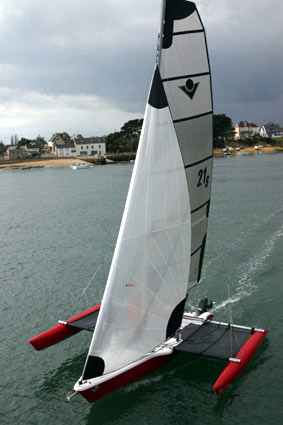
Here is what one recent customer has said about the 21S. "I have been mighty impressed by my Magnum 21S, which is now on its mooring in Cornwall for the summer having been wintered under cover in Swansea. She goes like a rocket and takes off in the slightest puff but I can still sail her single handed."
- The magazine
Current issue
- All the issues
- My magazines
- Technical specifications
- Multihull of the Year
- Classified Ads
- Destinations
- Online store
- All the magazines
- Subscriptions
- Accessories

Cannes Yachting Festival
Never in my memory as a marine industry professional have so many multihulls been exhibited at a boat show. Of the 700 boats on display, nearly 100 were multihulls, proof of the incredible growth of this market sector.
Create a notification for Boat Show
We will keep you posted on new articles on this subject.
Published 19/09/2024
By Gwen Dorning
Published: sept. / oct. 2024

Choose the option that suits you best!
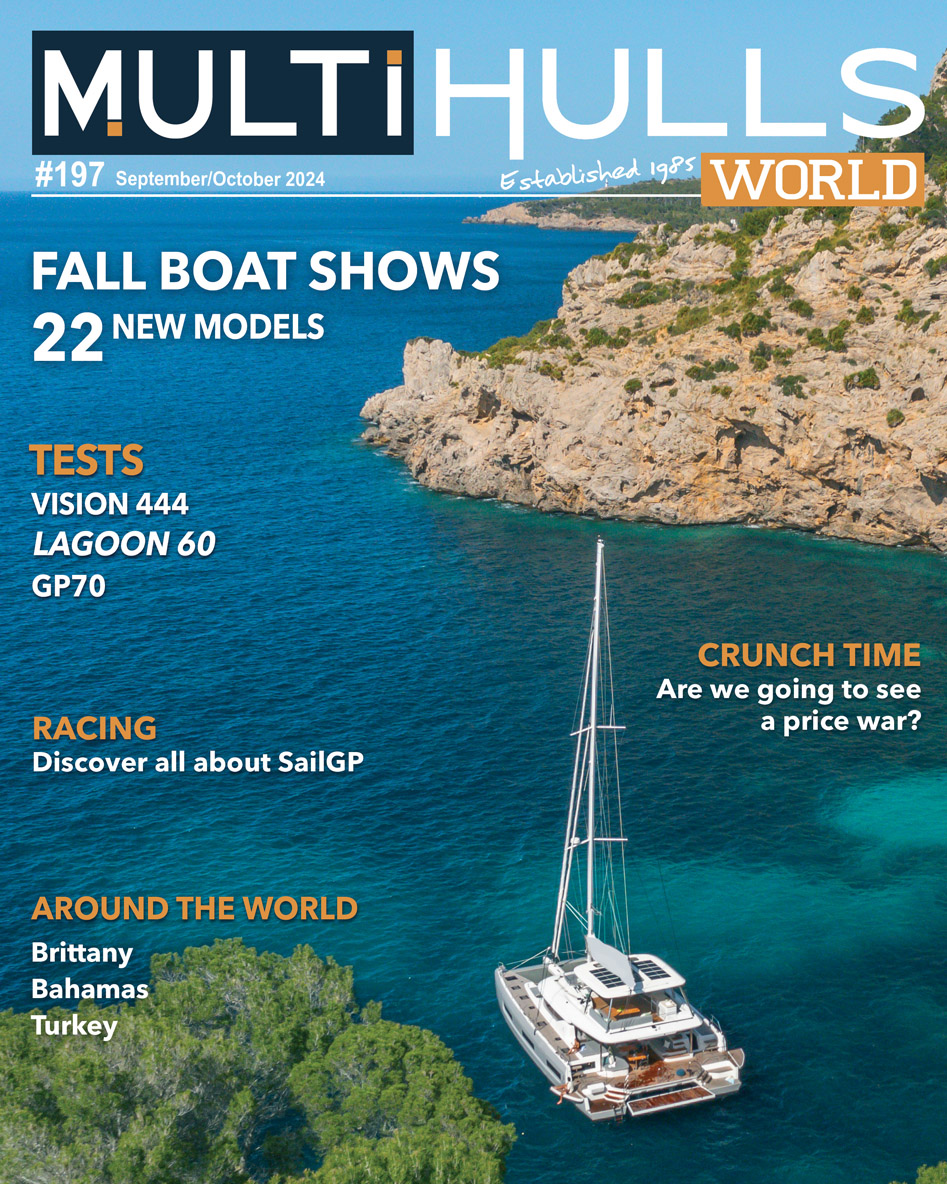
Issue #: 197
Published: September / October 2024
- Price per issue - digital : 6.50€ Digital magazine
- Price per issue - print : 9.50€ Print magazine
- Price with subscription : from 2.91€ Subscribe
Out video:

Even more spectacular: there were a good twenty making their World Premiere! Powercats are also on the rise, and their numbers are increasing every year. Many specialist multihull builders already cover both sail and power with their ranges, but what’s new is that single-hulled power specialists such as Prestige, Four Winns, and now SanLorenzo, are joining us with their multipowers. The results of this particularly intense 6-day show seem pretty positive, if we are to believe the testimonials we gathered on site: the cocktail of new products + price wars is working and winning over customers. As a result, order books are filling up...
www.cannesyachtingfestival.com
Tags :
- cannes yachting festival ,
Most-read articles in the same category
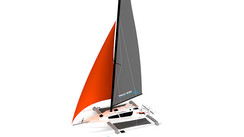
Tricat 8.50
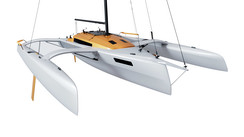
Lagoon Neo program

Dragonfly Days 2024

Bourgogne Catamaran

Rapido Trimarans
What readers think.
Post a comment
No comments to show.
MW #197 - Oct / Nov 2024
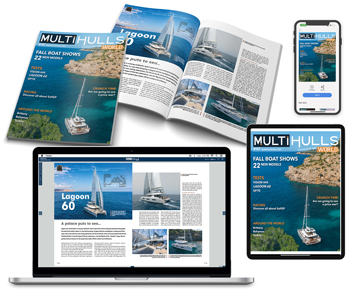
Les Occasions du Multicoque et du Refit

Nice Boating Tomorrow
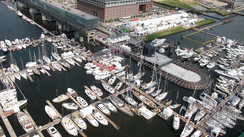
Calendar of International Boat Show this Fall

Subscribe now
The latest news from €3 / month
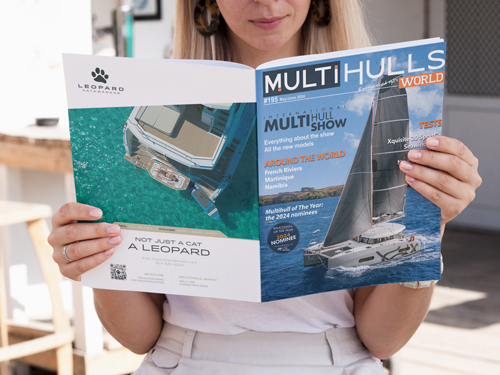
Video of the month
Our latest YouTube hit!

The Multihull of the Year
The 2024 results

Classified ads

NEEL 47 (2023) Available Immediately!
TRICAT 30 PERFORMANCE

TRIMARAN FARRIER F9AX

Privilege 515 (2010 - refit 2021) v. 3 cabins
Vous avez ajouté " " à vos favoris., vous avez supprimé " " de vos favoris., in order to add this article to your favorites, please sign in..
Bateaux moteurs
- News des PROs
- Annonces de voiliers
- Annonces de bateaux moteur
- Puces nautiques
- Bourse d'équipier
- Location de bateaux
- Emploi du nautisme
- Devenez PREMIUM
- Concours photos
Quel trimaran transportable choisir ?
Adepte du catamaran de sport, cette pratique devient un peu trop perso avec 3 enfants.
Je recherche donc un trimaran performant et transportable (maxi 25 pieds) pour continuer à se faire plaisir sur l'eau et emmener la famille pour des sorties principalement à la demi-journée / journée sur notre lieu de vacances dans les Côtes d'Armor (Trélévern).
Une question certainement très bête que je me pose est la possibilité d'échouer le bateau. En effet, là oû nous allons en vacances il n'y a que des petits ports à sec à marée basse.
Est-ce que les corsairs et autres consors sont conçus pour s'échouer au rythme des marée ou faut-il les sortir de l'eau à chaque sortie ?
Voilà, vos conseils et retours d'expériences sont les bienvenus. Merci Bertrand

Bonjour Bertrand, Quel budget? Sorties à la journée, ou cabine nécessaire pour camping?
Bonjour Micka,
Budget de 30 000 € Pour la cabine, j'hésite car si c'est pour pouvoir dormir à 5, il faut viser plus grand. Mais c'est vrai qu'un profil polyvalent permettant de passer une nuit sur le bateau c'est sympa notamment pour les enfants. Bertrand
Bonjour Bertrand,
Corsair, Farrier, Dragonfly, Tricat, Astus.... sont tous des dériveurs (à dérives relevables, que celles-ci soient des dérives sabre ou pivotantes...) conçus pour se poser à chaque marée.
A partir de là, certains ont des fonds en construction monolithique épais, capables de se poser sur un fond de galets sans dommages structurels, hormis le grattage de l'anti-fouling... tandis que d'autres ont leurs œuvres vives en construction sandwich qui (même avec un fond renforcé en fibres de kevlar) semblent demander un peu plus d'attention sur le choix de la nature des fonds.
Je laisse la parole aux "spécialistes" des différentes marques....
Sur le tricat22, j avais une semelle d échouage, qui renforçait le fond de la coque centrale. Sur les 23.5 et 25, rien de tout ça, mais ça se passe sans problème. Le poids total repose sur les trois coques. Mais bon, poser sur des galets, je ne me risquerai pas.
Une tente sur un trampoline, super pour les enfants!
Marrant, perso, pour la sécu, j'aurais fait l'inverse, les gamins dans la cabine bien à l'abri et les parents sur les trampoline.

Un Farrier bien sûr ! :pouce: c'est celui que j'ai choisi et je ne regrette pas , parfait pour ce programme . une fois qu'on a oublié le prix d'achat tout va bien !!!
Merci pour vos retours. Quid des performances sous voile entre les différents modèles ?
Concernant les modèles "habitables", j'ai noté le Farrier F-22 qui a l'air bien sympa avec une occasion en France actuellement. Le Dragonfly 25 mais hors budget. Le Tricat 25 Les Corsair mais qui semblent hors budget également
Dans un budget de 30000, et pour 2 d'adultes 3 enfants, tu aurais donc: -tricat 25 (et encore, tout juste, et un vieux modele) -astus 22 -farrier et corsair f24 et f25 Ça, c'est pour les transportables. Sinon, il y a les "anciens" fixes, tels que les pulsar,.....
Comme le dit Papy Zoom, une tente sur trampoline, c'est vraiment super, et pas seulement pour les enfants !!!! :mdr:
@Tranber10 Le trimaran tout jaune sur cette photo, entièrement construit sur plans, en Bretagne, par son premier propriétaire, est un Farrier F22 ! (super bateau !)
Les cinq tris de gauche à droite: Un Astus 22 - Un Farrier F25 - mon petit Winnie - Un Farrier F22 - Un Astus 20.1
Sacrés souvenirs de randonnée nautique dans les Îles Ionniennes (été 2013)!
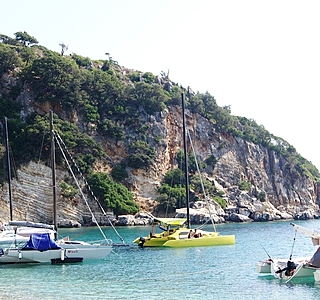
Et pour que les fans de trimarans Tricat ne soient pas jaloux...
Un Tricat 23.5 avec une tente sur chaque trampoline ! :famille: (faut dire que la cabine du T23.5 est vraiment riquiqui...)
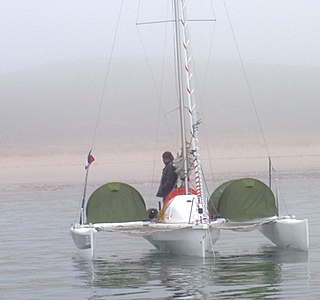
Je.confirme. Mais elle permet quand même de coucher 2 personnes. Par contre, les temps sont quand même potes en largeur pour des couchages.
Le correcteur, tu peux le désactiver.
Hum. Quand tu bailles, tu réveilles l autre...

et d'autres choses
On ne se relis jamais assez, saleté de correcteur... Il fallait lire petits bien sûr, au lieu de pote. Et trampo au lieu de temps. Ce correcteur Samsung est vraiment une merde.
Connaissez-vous le SCARAB 670 ?
F24 bien sur ! Il décolle à la moindre risée, se beache facilement, ne demande qu'une demie heure pour etre à l'eau et se transporte avec un permis normal... le pied ! Je vends le mien pour passer à la taille supérieure ;-)
Je t'ai envoyé un msg en mp Bertrand. Xavier
Tricat vient de sortir un 20 pieds, flotteurs repliables, habitabilité > au 23.5 J ignore son prix, mais ss dte proche des 30k.
Si j’étais en recherche d’un petit trimaran actuellement, c’est incontestablement le Tricat 20 que j’achèterais !!! www.trimaran-tricat.com[...]cat-20/ :pouce:
J'ai bien vu le Tricat 20. Il y a également son confrère l'Astus 20.5 Des avis entre les deux ?
Autre question pour les propriétaires de tri transportables qui utilisent leur bateau en day boat : le sortez vous de l'eau pour chaque nav ou recherchez vous une bouée ou une place dans un port ?
Pour ma part je ne trouve aucune place dans les petits ports des côtes d'armor entre Louanec et Port Blanc. Il y aurait un Tricat à Port Blanc sur l'une des deux bouées possibles pour les petits tri.
Il faut dire que je serais en vacances en août...
Sinon pour ma pratique de Grenoblois qui naviguera un peu sur lac, un peu en Bretagne (trispeedcup ;-) ) et un peu en méditerranée, j'ai estimé qu'il fallait un bateau compris entre 20 et 22 pieds (voir 23.5 pour le tricat) max pour faciliter les manipulations et le transport.
lis ceci, c'est ton programme? : nauticaltrek.com[...]/recit/
Ahhh là, c’est sûr... Bertrand va avoir de la lecture ! :pouce:
Et c’est un site sur lequel il faut retourner régulièrement, vu le rythme maintenant assez soutenu avec lequel tous les contenus sont remis en ligne.
Toutes ces ressources et ces récits ont maintenant une dizaine d’années... se concentrent autour de l’utilisation de petits monocoques transportables (Blue Djinn, Tabasco, Globe 530...), de catamarans de raid, et des quelques petits trimarans mis sur le marché dans les années 2000 ( Magnum 21, Astus 20.1 , 20.2 , et 22...)
Gageons que la renaissance de Nauticaltrek va encourager les pratiquants de la randonnée nautique côtière à bord de voiliers transportables à envoyer au webmaster de nouveaux articles, récits, mettant en scène des bateaux plus récents.
La rubrique « Trucs et astuces » , concernant tous les volets de l’utilisation d’un petit voilier, est une mine d’informations à ne pas rater !
Bonne lecture !
Tricat 20 et astus 20.5 sont tout récents. Tu n auras pas bcp de retour d expérience. Ce qui est sûr , c est que ces deux là sont plus vite mis en œuvre que le 23.5 (boulonnage des flotteurs)
Nos amis ( de la bande de TriSpeedCup) Marc et Sylvie S. vendent leur Astus 20.1. (Je ne pense pas dévoiler un secret en disant ce que Marc m'a dit il y a une semaine au téléphone...: ils le vendent pour passer à la taille au dessus !)
www.leboncoin.fr[...]72.htm/
Cet Astus 20.1 est un très bon tri avec lequel ils ont pas mal navigué en randonnée nautique en couple, un peu partout en France, et en Europe (Grèce, Croatie....)
Marc l'a beaucoup optimisé pour la randonnée nautique... (voir l'annonce)
Il l'a aussi nettement amélioré en terme de sécurité (et de performance), en remplaçant les (petits) flotteurs d'origine, par une paire de coques de cata de 17 ou 18 pieds.
J'ai pas mal suivi (et conseillé) Marc lors de la conception et la réalisation de cette adaptation, je peux attester que c'est du sérieux !
Je viens de fouiller dans mes mails pour essayer de retrouver de quelles coques il s'agit...pas retrouvé...(c'était des coques à dérives sabre...)
Si tu es intéressé par ce bon petit tri (pas cher compte-tenu de son optimisation : 12k€ ) , le mieux est de le contacter via son annonce LBC ci-dessus. Il te donnera lui-même plus de précisions.

Personnellement, je trouve les prix neufs des tris transportables très élevés (Astus 20, plus de 25 000 et Tricat 20, plus de 35 000 euros). J'ai eu un Astus 20.1 pour un peu plus de 12 000 euros avec une remorque permettant de la tracter avec le PTAC qu'il faut, je l'ai revendu 3 ans après 10 000 euros, le marché occasion était actif. Actuellement, ca a l'air un peu morne : un Astus 20.1 à 8200 €, un Tricat 25 à 26000 euros et d'autres tris à des prix interessants. Vu ces tarifs, le neuf va avoir du mal.
Le t25 à ce prix là, ça doit être celui qui est accidenté

en quelques années l évolution des petits tri a été spectaculaire,de grands cabinets d architecture marine ont apporté un gros plus.le volume des flotteurs a explosé les rendant beaucoup plus puissants,d ou des contraintes de fabrication accentuées ces petits tri sont fabriqués 100% en france,je ne suis pas sure que leur marge soit extraordinaire et je trouve que leur prix est cohérent surtout qu ils continuent à nous fabriquer des bateaux de plus en plus fun!!
Multi23, Df25, pulse et autres Corsair ne sont pas 100% français
J'espère qu'ils font de la marge, car ils le méritent.
Et ils s'en tirent bien, car ces tris français sont quand même compétitifs, surtout quand on les compare à leurs concurrents étrangers venant d'Asie. Les français, à longueurs égales, coûtent moins chers que, par exemple, weta 15000€ pour 4m40, pulse 600 45000€ pour 6m, corsair 760, 85000 pour 7m60,....
Donc, bravo les franchies.
Je n'ai pas dit que les chantiers font une grosse marge, je ne crois pas d'ailleurs. C'est simplement le fait que le differentiel avec l'occasion devient élevé.
oui désolé,je parlais des deux nouveaux bretons, l astus et le tricat
Ces deux chantiers ont plus de 15 ans d âge. Pas vraiment nvx ;-)
je parlais des deux nouveaux bateaux,l astus 20.5 et le tricat 20

Pour ma part part je peux te faire un retour sur un tri un peu plus grand: le Farrier F25, qui demande un peu plus de temps pour la mise à l'eau et le matage que ceux cités précédemment. Je pense qu'entre deux remises à l'eau avec matage, il faut pouvoir naviguer au minimum une semaine, sinon la contrainte devient trop forte et on se lasse. Je sors essentiellement à la journée et le bateau est toujours à l'eau, mais il est probable que lorsque j'aurai un peu plus plus de temps j'en ferai une utilisation sur plusieurs jours. Pour 2 adultes et 3 enfants ce sera très correct pour le confort.(l'utilisation de tente 2 secondes est tout à fait possible. Je l'ai tracté avec un véhicule de moyenne gamme (Megane) sans problème, et sur l'autoroute lorsque la chaussée est de bonne qualité ça ne bouge pas du tout, mais je me limitais à une vitesse de 90km/h.
tricheur ! le meilleur bateau , selon les dire de Farrier, c'était son préféré , dommage c'est tres rare !
Phi34 a racheté son F25C à un régatier du genre "furieux", apparemment, qui devait compter chaque gramme embarqué à bord... La première fois que je suis rentré dedans, au large du cap d'Agde, pendant une fin de mâtinée méditerranéenne ensoleillée, j'ai eu un choc ! Je n'y voyais rien, tellement c'était tout noir là-dedans !!!!
L'hiver suivant, remis à terre sur sa remorque pour quelques travaux d'entretien, Philippe a eu la bonne idée de peindre tout l'intérieur en blanc... Ahhh bah ça change la vie à bord.... :langue2:
@Paddy On pourrait essayer de le peser l’hiver prochain, si Phi34 le sort de l’eau pour le remettre sur sa remorque. Il suffit d’un pèse personne (de préférence électronique pour plus de précision), d’un mètre à ruban , et d’une calculatrice !
La procédure, très simple à mettre en oeuvre (et testée par un grand nombre de nauticaltrekeurs), est décrite ici : nauticaltrek.com[...]morque/
P.S. J’en avais même fait un sujet de TP pour mes élèves de 1ère et terminale STI ! (Sans leur mâcher le travail... je leur demandais de poser les bonnes équations ; en appliquant le « principe fondamental de la statique »; et de les résoudre !!!)
Oui, cela marche aussi avec une remorque double essieu ! C’est une question qu’on s’était posée à l’époque : on peut, par exemple, prendre pour axe d’essieu de calcul, le centre entre les axes des deux essieux. Plus on fait de mesures, avec des positionnements différents du bateau sur les rouleaux de la remorque, plus la moyenne des différents résultats de calcul de la masse-lège du bateau obtenus sera précise. Une grande multiplicité des mesures permet également d’écarter une valeur qui serait trop éloignée de toutes les autres... probablement consécutive à une erreur de mesure sur un des paramètres.
Ça passe en poids réel avec une Megane ?
Je dis ça, c’est pô pour cafter... mais le F25 de Phi34 doit être (très) léger sur sa remorque (même derrière une mégane), au même titre qu’il paraît léger sur l’eau.
Dans sa grande modestie, il omet de signaler que son Farrier est un F25 « C »(coque centrale en .....? Mais si... ahhhh...j’ai le mot sur le bout de la langue ! vous savez ? cette fibre toute noire...chut....faut pô le crier sur les pontons...)
Quel est le poids réel , pesé du F 25C ?
Super c'est génial ! ça marche aussi avec une double essieu ? il faut que je lise ça quand je serai à jeun :langue2: merci
J'ai aussi un F25 (longueur 8 m), qui en habitabilité est equivalent à un F27/F28 , sans puits de dérive au milieu du carré , car c'est une dérive relevable . c'est bien plus habitable qu'un F24 , qui a la cuisine en longueur . je confirme que on peut dormir à 2 adultes + 3 enfants , mais que on ne le met pas à l'eau pour le week-end . Car si on ne veut pas immerger la remorque , il faut gruter . Par contre nous vivons a bord un mois , 2 adultes , 2 ados , avec facilité ,... même en Bretagne humide . En corse , il y avait même une (2 possible ) tente decath sur le tremploline . bonne réflexion
Merci à tous pour vos conseils et retours d'expériences.
J'ai l'impression, mais peut-être n'est-ce qu'une impression, que les chantiers français font d'avantage du tri de sport amélioré pour être habitable en mode camping alors que les Corsair & Farrier sont des bateaux peut-être plus habitables et hauts sur l'eau. D'où la différence de tarif... En ce qui me concerne, le F-22 fait rêver (le prix va avec), en sachant que cela ne se base pas sur une expérience de nav
le F22 est le dernier bateau de Farrier , avec tout le cumul de son expérience , je signe de suite , mais difficile à trouver , car n'était fabriqué qu'en amateur , maintenant il est industrialisé . mais il était introuvable il y a 3 ans et certainement trop petit par rapport au mien . Mais si la taille te convient , on en trouve maintenant d'occase , tu peux regarder ! le prix ça s'oublie .... il faut juste trouver le budget :mdr:
Bon et bien c'est fait. Voici deux photo de Watatsumi ;)
C'est un F22R cabine courte (donc plus grand copckit), construction amateur qui a navigué une quinzaine de fois à Ibiza.
Pas mal de choses à comprendre et à apprendre notamment pour la mise en oeuvre. Première mise à l'eau sur le lac du bourget en avril si je trouve une place en "escale" puis ensuite le bateau sera basé à Perros-Guirec et alentours.
Merci pour vos conseils de mai dernier qui m'ont aidé à avancer dans ce projet.
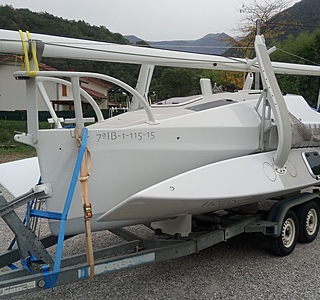
Belle bête !!! Félicitations !
En espérant te croiser sur la TriSpeedCup .
J'espère pouvoir participer à une étape. Entre famille et boulot ca devrait pouvoir le faire
Petite question administrative: Je croyais que c'était compliqué d'immatriculer une construction amateur récente. Comment ça s'est passé pour toi ?
Effectivement tu dois avoir raison. La contrainte des 5 ans pour les constructions amateur est une contrainte française. Il suffit d'acheter ou de revendre en dehors de la France.
Vu que le bateau était immatriculé en Espagne, cela n'a pas posé de problème. Je crois que cette règle s'applique pour les bateaux immatriculés en France.
Enfin, l'immatriculation est encore en cours, il me manque le certificat de résiliation de l'immatriculation espagnole qui est exigé par les affaires maritimes pour finaliser le processus. Cependant, je n'ai eu aucune autre remarque de leur part.
Pas sûr. J'ai acheté un petit Wharam, construction amateur anglaise. J'ai appelé la Mission Plaisance à le Défense, très aimable. Il m'a été confirmé qu'il suffisait que j'établisse que le navire avait bien été construit en Europe ( pas d'immatriculation en Angleterre sur petits bateaux) et qu'il avait plus de 5 ans. Ayant la preuve de tout ça, immatriculation sans problème.
:pouce: Whouaou super moi aussi j’espère première mise à l'eau sur le lac en Avril :bravo:
Sur le Bourget également ? As tu une place dans l'un des ports ?
:pouce:Oui, ça me parle, j'ai tourné autour. La classe :bravo:
J'aimerai bien le voir. Le F28 doit être une sacrée bête :acheval:
Le Bourget oui :heu: mais bateau dans le garage, sortie à la journée :-p
J'ai essayé mon F28 en juin là-bas mais a conjux (au Nord du lac), rampe mise l'eau correct et beaucoup moins de monde qu'à AIX ,et je l'ai laissé un moment sur sa remorque mat monté sur le parking a côté
Ouais ça avance bien ,Je l'ai laisser en Espagne pour l hiver je compte faire les Baléares dans 5mois, il y a un dash750 au port de Conjux
Donne des détails, on est intéressé. Bravo !

Trimaran sportif habitable .... et transportable = Black Marlin de Vision Boats
(il y a des photos qui trainent sur le net et sur la page Facebook du constructeur où on le voit sur sa remorque spécifique)
Cela m'etonnerait qu'il ne fasse que 2m59 (usa) plié....
Impressionnant cette photo. Visuellement, La remorque semble trop petite.....
superbe tri ce Black Marlin et le Barrucuda aussi, mais ça doit être quand même être long pour le mettre sur la remorque , démonter les flotteurs il faut être 3 personnes , j'avais failli acheter un dragonfly Sw800 ,j'ai vu que c'etait le bazar pour le transporter
J'avais vu la photo, d'où ma remarque. Cela m'etonnerait que cela ne fasse que 2m55 de large. Il est sans doute sous la.barre des 3m, mais dans ce cas, c'est convoi exceptionnel. Et cela m'etonnerait egalement que le vw puisse le tracter, meme si je sais que les transporteur et caravelle, ont des versions montant jusqu'à 2600kg. Et pour obtenir ce resultat, il faut lever la coque centrale et démonter les flotteurs pour les loger dessous. Ce n'est pas.ce que j'appelle transportable.
Belle bete visiblement que ce f22r, bravo tranber.
quand j'ai ramener le mien a ma vieille A6 ;)
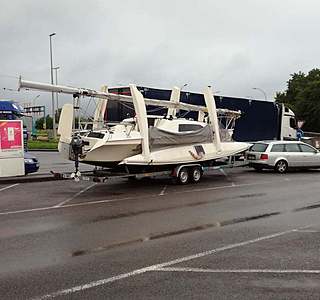
@NANAR38 et avec le mistral sur l'A7 ? :-(
J'ai pas trop eu quand je suis descendu cette été, mais jusqu'à 100km/h ça va , après faut être plus attentif, mais pas plus qu'avec un porte voiture
Il me semble que la vitesse avec ce type de charge est limitée à 80 kmh. A vérifier... De toute façon je ne dépasse jamais cette vitesse quand je tracte. Les remorques lourdes sont pour moi des objets à traiter avec beaucoup de réserves.
En tractant une remorque ,90 kmh si l'ensemble dépasse 3.5T :-)
Bienvenue dans le monde des tri transportables!! on se verra à une étape de la TSC. Dans quel coin es tu?
Oups j'ai fait 1400 bornes a 110 j'oubliais des fois que j'avais une remorque ;)
@Nanard Avec un Hc16 sur la remorque, j'en connais qui ont essayé à 160 kmh ça le fait mais bon c'est pas prudent et avec les limitations de vitesse aujourd'hui en plus.
,C'est quoi la TSC
Tri speed cup
j'ai regardé vite fait sur le net ,j’irais en faire une , , je connais rien au régate ,ça doit être un bon moyen pour progressé
Bonjour, je cherche un endroit pour hiverner au sec un trimaran de 7 m sur remorque (8,5 m avec la remorque, 2,5 m de large et 2,4m de haut) au sec aux alentours de Grenoble (je sais, pas simple). Si jamais vous avez connaissance d'une possibilité je suis preneur.
Slt,, si ça te dit, suis a 60 bornes de Grenoble
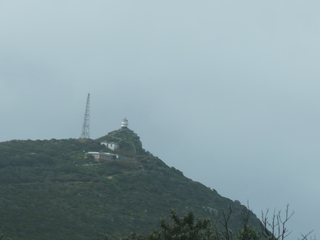
Phare du monde
Cape Point, South Africa
S'identifier
Pas encore de compte ? Monter à bord !
Forums plaisance et nautisme
Dans quel univers souhaitez vous ajouter votre Question ou votre Discussion ?
Échanges sur la voile et les voiliers : technique, nouveautés, vie à bord, navigation, tour du monde...
Échanges sur les bateaux à moteur : gros cubes, mécanique, technique, nouveautés, sortie en mer...
Espace convivial d'échanges, débat d'idées, polémiques, enguelades, autour de l'univers du nautisme
Forum des actualités du site, nouveautés, bugs, suggestions d'améliorations et évolutions...

IMAGES
VIDEO
COMMENTS
Here are 6 of the best trailerable trimaran: The Dragonfly series. F-22. Corsair Series. Astus. Weta 14.5. Windrider 17. Choosing the best trailerable trimaran (a multi-hull with three "hulls") will depend on crucial factors like speed, durability, design, and ease of transportation.
Fruit de 25 ans de passion et d'expertise, le Tricat 8.50 redéfinit le monde des grands trimarans transportables, en y ajoutant une touche de confort et d'agilité. Avec sa place unique entre le Tricat 6.90 et le Tricat 30, il devient le parfait équilibre entre l'aventurier audacieux et le croiseur rapide, offrant ainsi une expérience ...
Tricat: la référence du trimaran transportable. Le chantier Breton Tricat résulte de ses 20 années d'expérience dans la conception, la fabrication, et la vente de Trimarans transportables et repliables. Choisir Tricat, c'est choisir un niveau d'exigence élevé tant en termes de performances qu'en robustesse ou finitions.
A range of transportable and folding trimarans from 20 to 30 feet. The Tricat 20 ©tricat. Tricat offers 4 models in its catalog: from the Tricat 20, designed for day cruising or coastal sailing, to the Tricat 30, equipped for semi-high speed cruising. The Tricat 30 ©tricat. Each model of the range keeps the DNA of the shipyard, namely boats ...
Use: Sport cruisers HOBIE ADVENTURE ISLAND. Great for beginners and adventurers alike, the Hobie Mirage Adventure Island series is nothing if not just plain fun. With the option to use as a kayak or as a very basic trimaran, the Hobie is transportable, versatile, unintimidating, lightweight, and wonderfully affordable.
True to the successful concept of Astus trimarans, the Astus 22.5 is transportable like others Astus. Modern and fast, with a length of 6.90 m, a width of 4.90 m and 4 beds possibility, it will be ideal for family outings. It retains all the features which made the success of our trimarans : - Easy to rig and handle.
A fast trimaran brings out the daysailor in all of us. A successful evolution of the Corsair 24, the new Corsair Sprint 750 Mark II is a fast, versatile, trailerable trimaran built for a perfect day of sailing. The Sprint shares the same hull design as its cousin, the Dash 750, with the same large buoyant floats, beams, and folding system.
A stainless steel bolt on the inboard end of each beam secures the floats for sailing. Crucially, wingnets remain attached during the folding process - their frictionless fixing allows them to tension themselves appropriately through the folding process. The system is so simple and balanced that Corsair trimarans can even be folded while ...
The Dragonfly 28 comes in both a Touring and Sport version, and, introducing 2016 the new Dragonfly 28 Performance version. Discover the evolution of a popular model. Introducing high volume wave piercing floats for fast and relaxed sailing. Quality combined with performance secures an outstanding experience.
Here is a full tour of the brand new Corsair 880 trimaran. It is fast, light, and folds up small enough to go on a trailer. Could this be the perfect boat? T...
The main hull of the Astus 22.5 is nearly 23ft (6.95m) long: unusually for a French boat, the designation understates the length. In sailing mode with the bowsprit rigged (so you can fly the gennaker), the total length is 8.3m. The sailing beam is 4.90m (16ft), but it takes only a few minutes, whether you're ashore or afloat, to reduce the ...
The Tricat 25 Evolution is the latest addition to the Tricat shipyard. This 7.70 metre long transportable trimaran has the particularity of folding up from 5.50 metres wide when sailing to 2.40 metres in transportable format. You will be able to discover it during the Grand Pavois which starts tomorrow.
A Farrier 33R trimaran with amas folded and secured on a road-legal trailer exem- plifies the advantages of adjustable- beam multihulls, which are easy to trans- port and store out of the water. ... Transportable denotes a road-legal trailer package but with a longer assembly time to sail away. It might even take more than one trailer load, and ...
The layout of the LEEN 56 can be completed with 2 additional cabins at the rear of the boat with single and/or double beds and separate shower rooms. In a 5 cabin layout, the LEEN 56 can accommodate up to 11 passengers. The quality furniture is designed in light coloured wood and made by quality cabinetmakers.
Le Diam 24 est un trimaran de régate monotype. Tout le monde a le même ! Il a été dessiné pour répondre à la croissance exponentielle des budgets des voiliers de courses. Simple, rapide, facile à naviguer comme à transporter, le Diam 24 est un support amusant pour naviguer ne flotte et se mesurer à d'autres marins.
The Cross 18 was designed by the famous trimaran designer Norman Cross about 30 years ago. Not surprisingly, like many other designs of this multihull pioneer, this design still has merit today. It uses a simple hinge system for the amas, so that they fold up through 180 degrees to lay side-by-side upside-down over the open cockpit.
No trailer, no engine, no constraints TECHNICAL SPECIFICATIONS Features Assembly in less than 5 minutes Prao version and possibility of a trimaran (with 2 floats) CE approval: category D Architect: VPLP Design Design: Jean-Hubert Pommois Draft : 0.15 m / 0.7 m (low drift) Payload 130kg: 1 adult + 1 child Dimensions and weight Central hull: 4 ...
This trimaran retails for $595,000, making it a cheaper option than the Rapido 60. 5. Dragonfly 40. The Dragonfly 40 measures 40 feet (12 meters) in length. It features high-comfort standards, making it one of the best trimarans in the market for taking your family for a cruise.
November 25, 2020. Some of the most unusual looking boats on the water are trimarans. By definition, the one thing that makes a boat a trimaran is the presence of three hulls (as compared to a single hull for monohulls, and twin hulls for catamarans). But these hulls are not always equal; in fact, more often than not the two on the outside are ...
DAY BOAT OF CHOICE. With more than 400 units afloat already the MAGNUM 21 trimarans have clearly demonstrated that they are the day boats of choice for safety and ease of use. In the matter of fast day boats, they set the standard today. As for the new 21.S, clubs appreciate their increased power, notably with a full load in light airs.
A transportable trimaran for cruising and racing News Lagoon Neo program When the world's No. 1 sets about a refit… News Dragonfly Days 2024 ... TRIMARAN FARRIER F9AX Location : VANNES, France Year : 1998 89 000, 00 Inc. tax€ Privilege 515 (2010 - refit 2021) v. 3 cabins Location : Canet en Roussillon, France
Quel trimaran transportable idéal. Mon simili tricat 22 sport est super comme tri de sport et de ballade, mais avec l'arrivée imminente d'une deuxième fille, on trouve l'intérieur trop petit. Seulement voilà comme tri rapide transportable il n'y pas grand chose.
Bonjour, Adepte du catamaran de sport, cette pratique devient un peu trop perso avec 3 enfants. Je recherche donc un trimaran performant et transportable (maxi 25 pieds) pour continuer à se faire plaisir sur l'eau et emmener la famille pour des sorties principalement à la demi-journée / journée sur notre lieu de vacances dans les Côtes d'Armor (Trélévern).
La légende est de retour, ou plutôt les légendes ! Remercié au printemps 2023 par IDEC, son sponsor historique depuis 20 ans, Francis Joyon a depuis repris la barre d'un trimaran Orma emblématique qu'il avait fait construire en 1994. Un retour aux sources pour le marin de 68 ans qui continue à fonctionner comme il sait si bien le faire, avec simplicité, sobriété et efficacité.